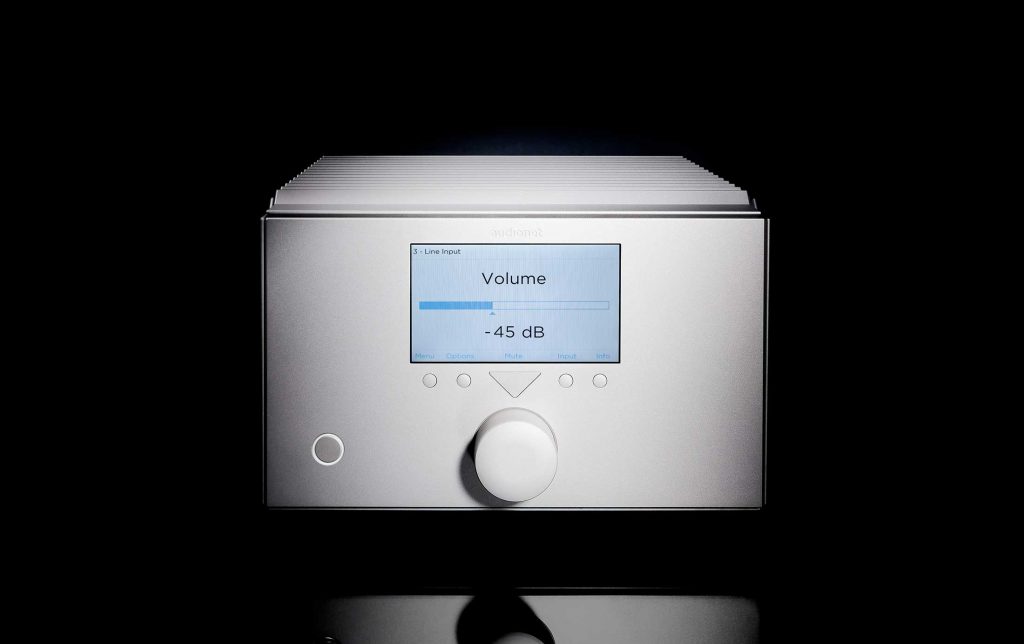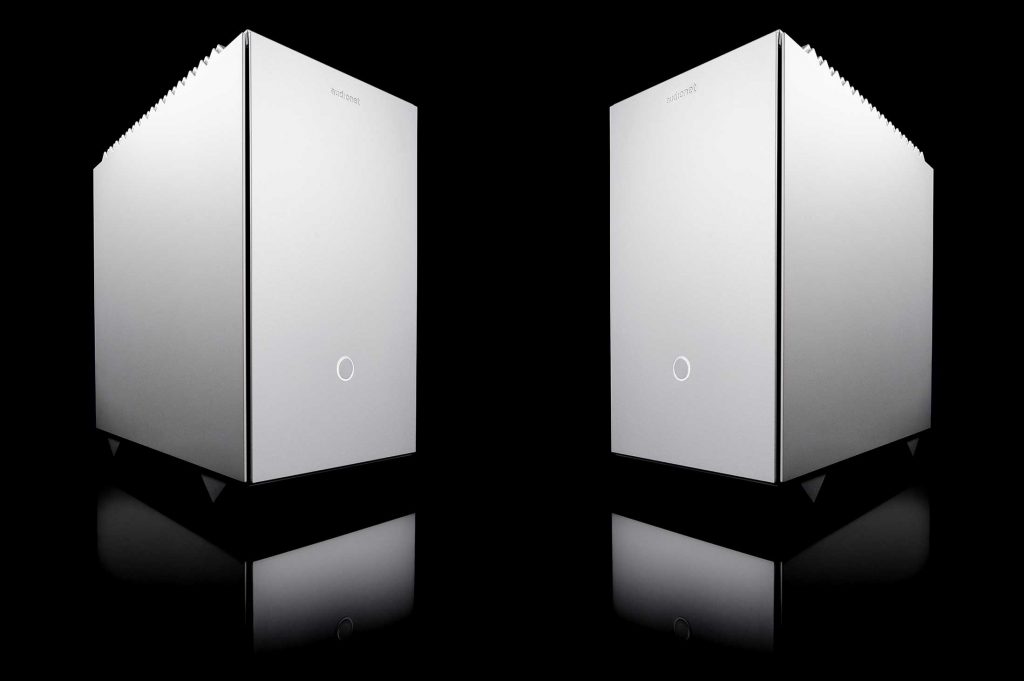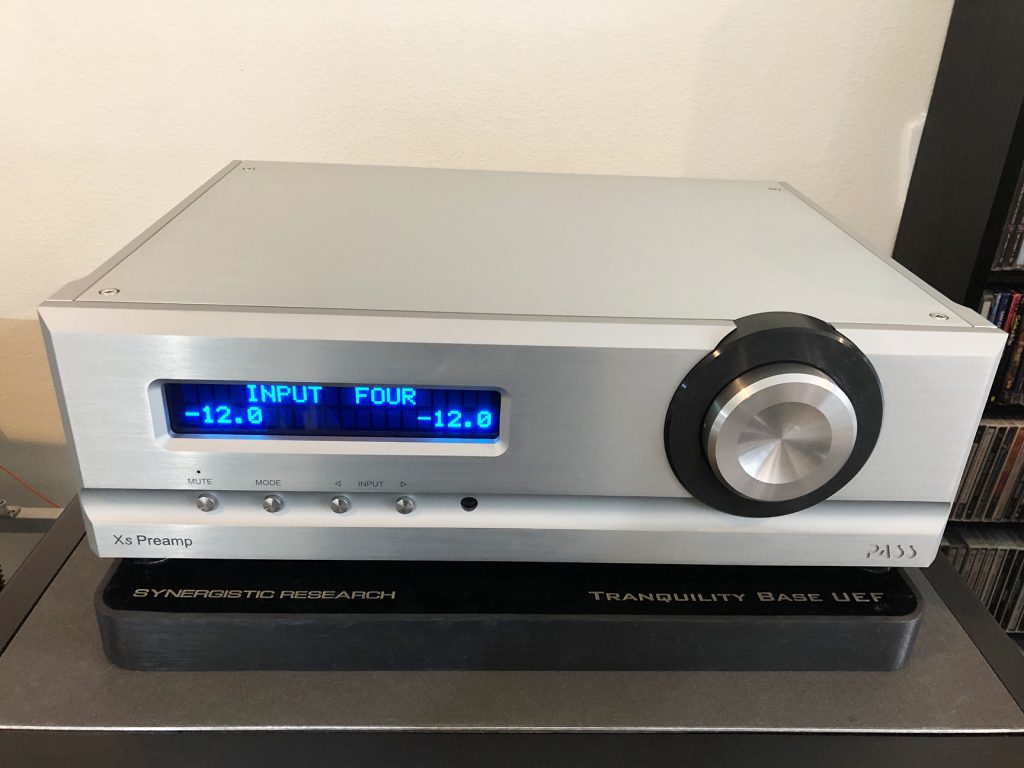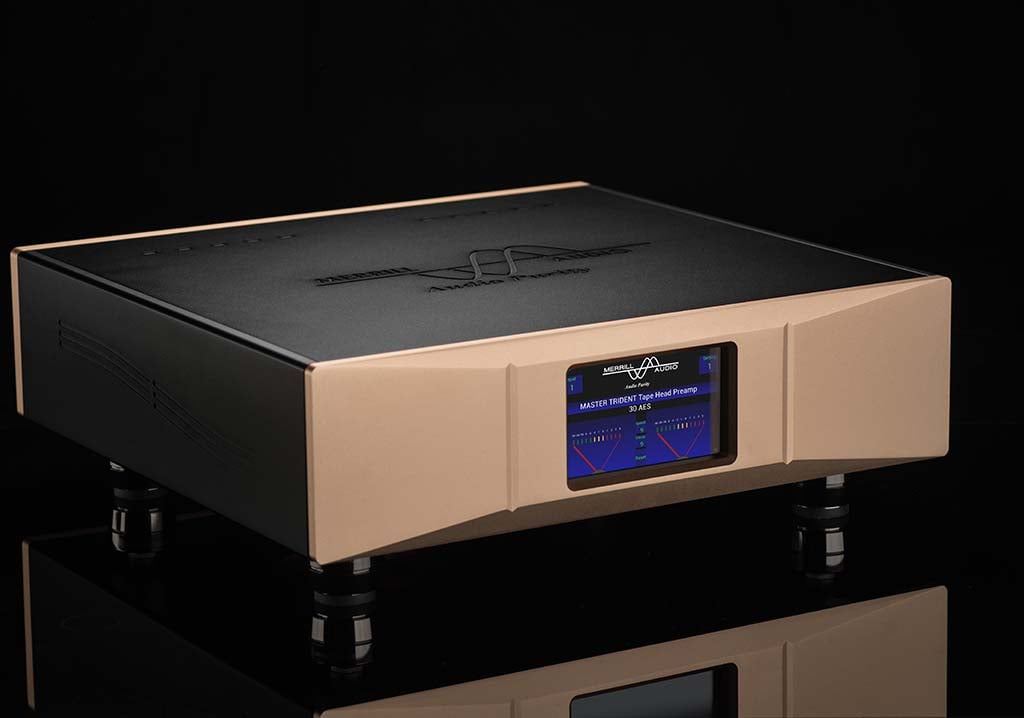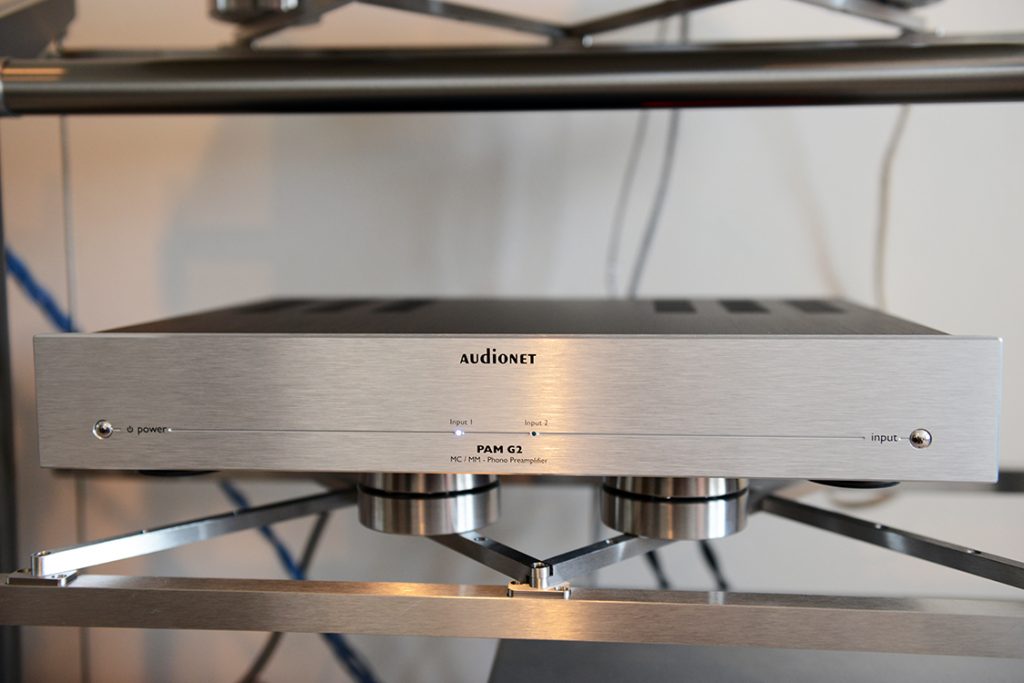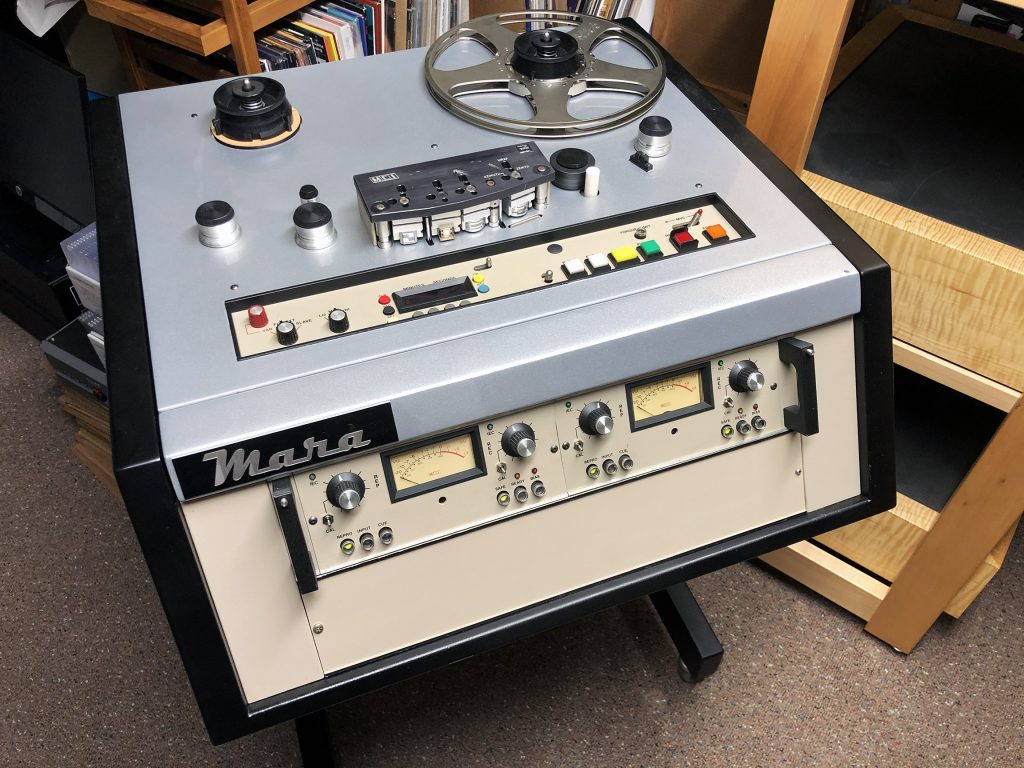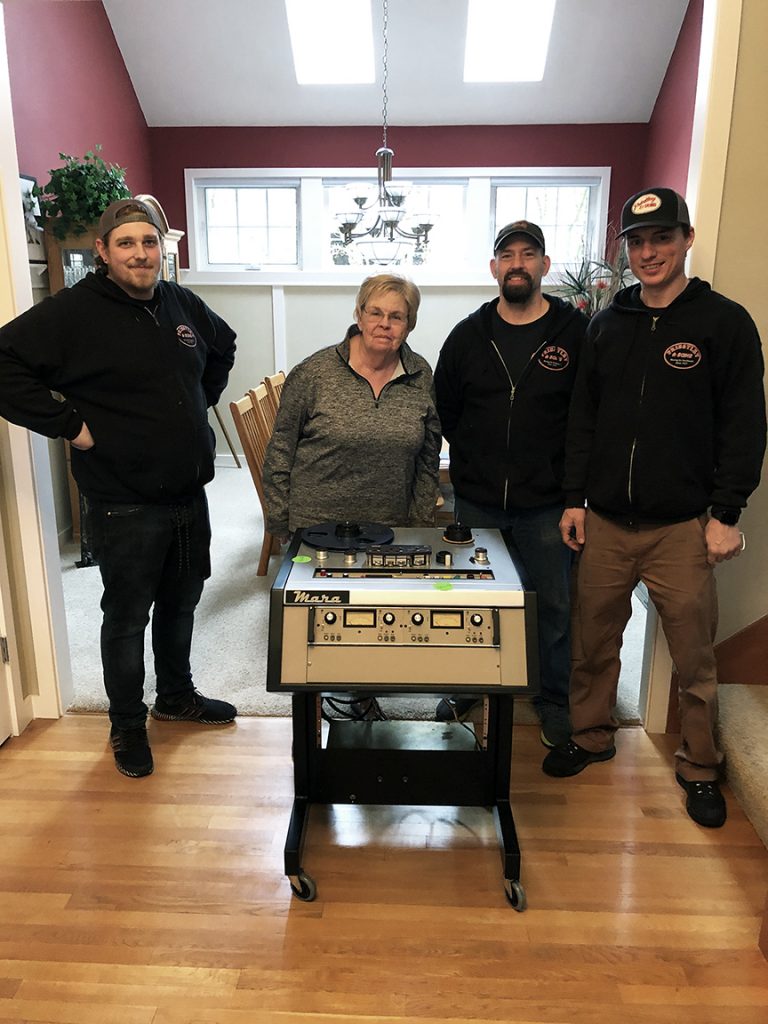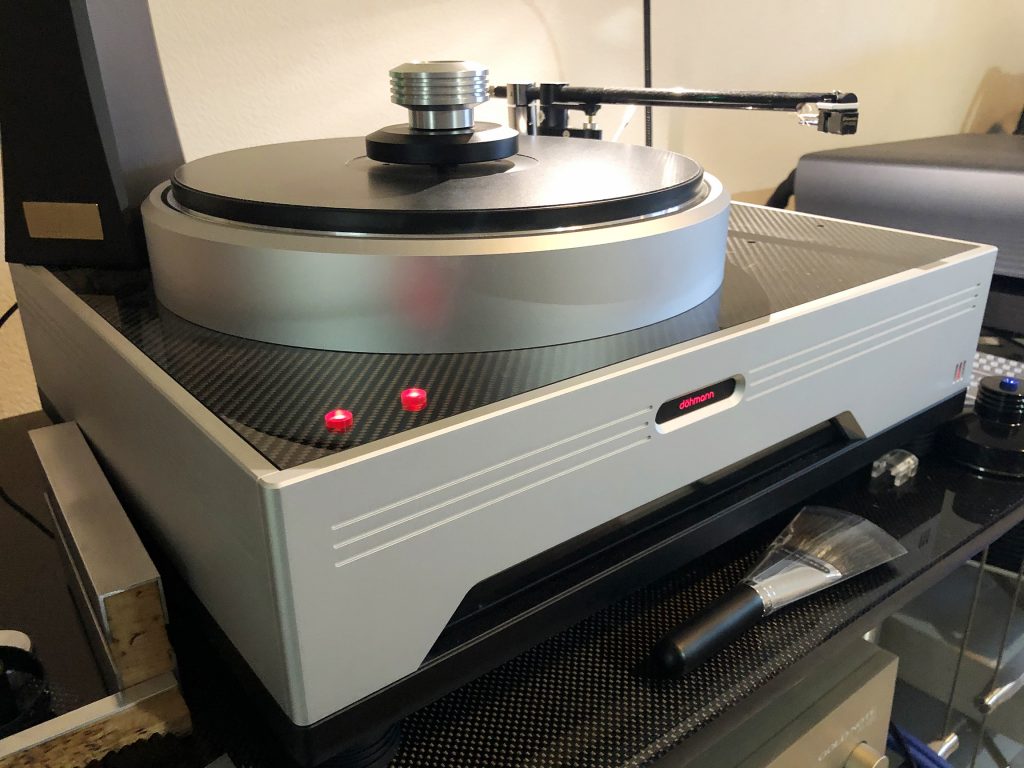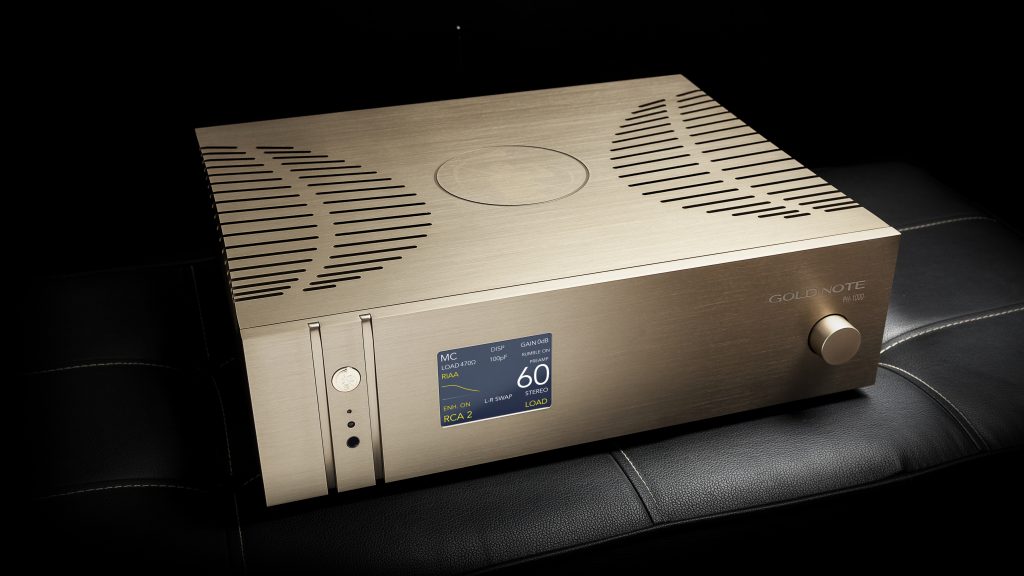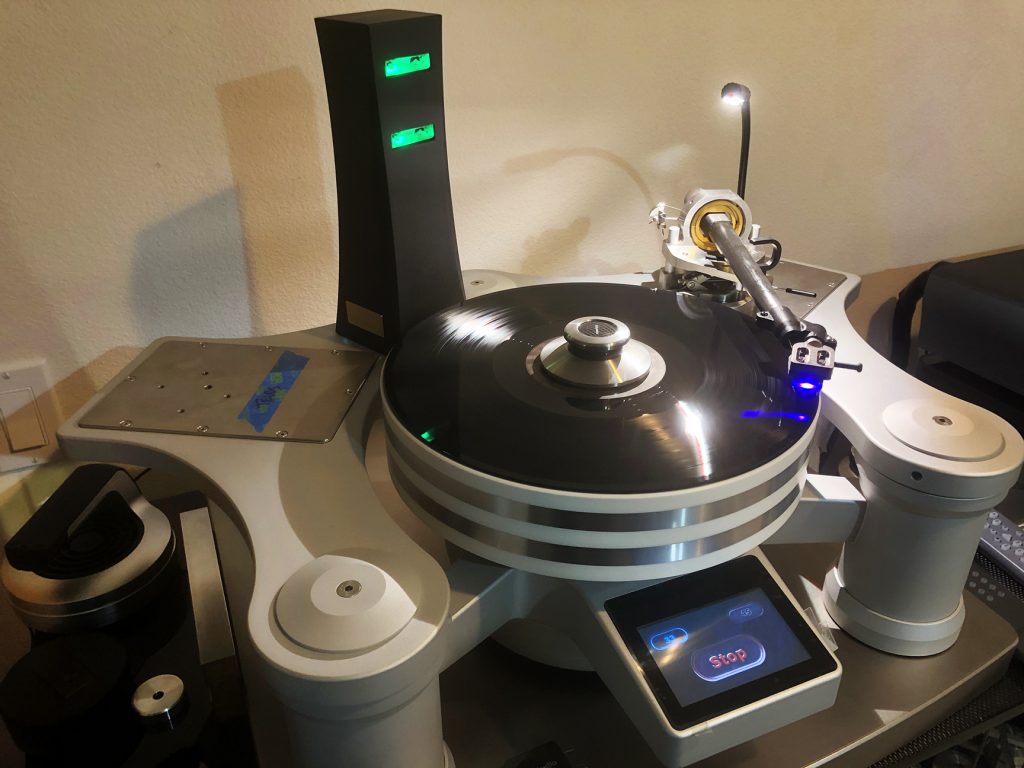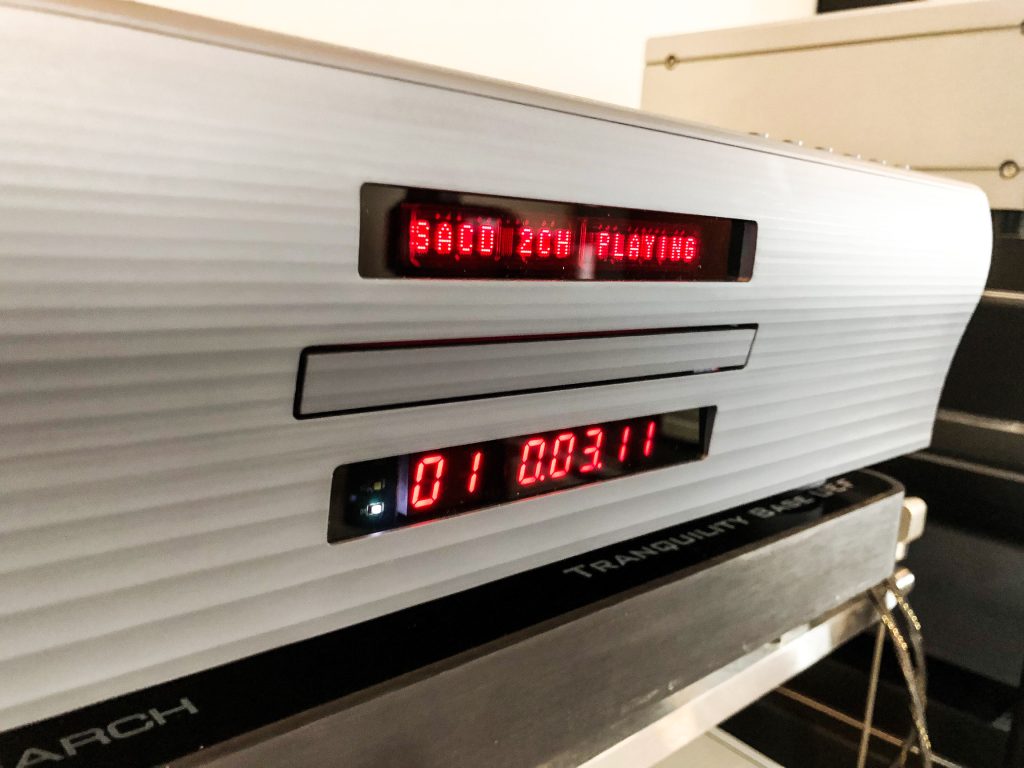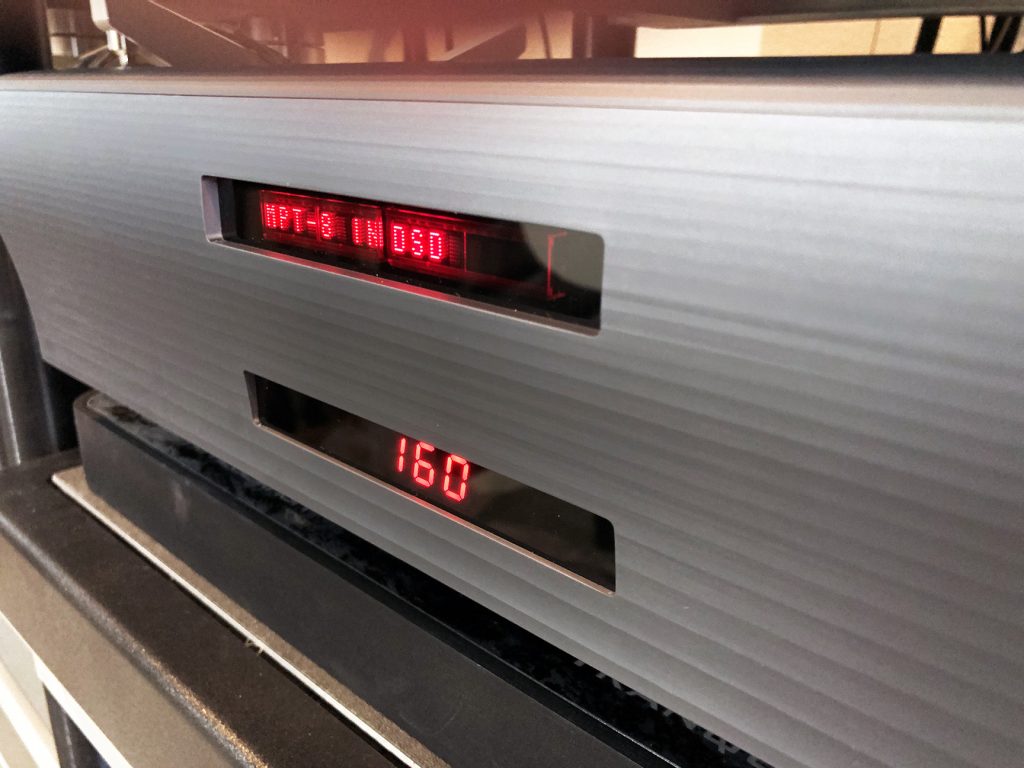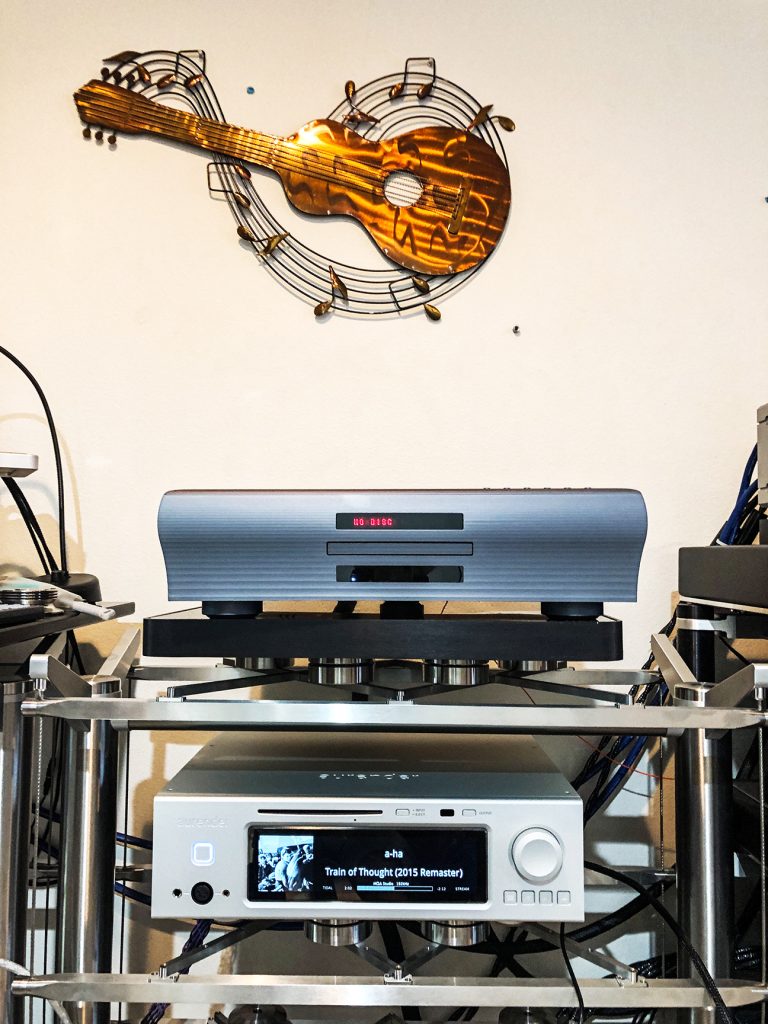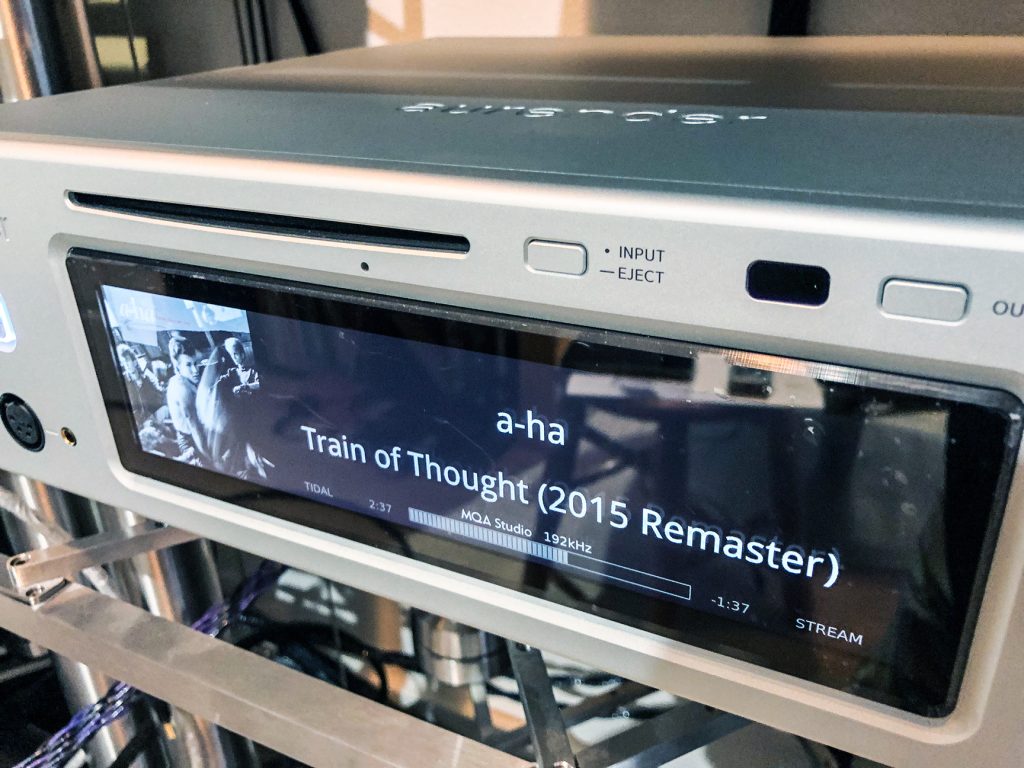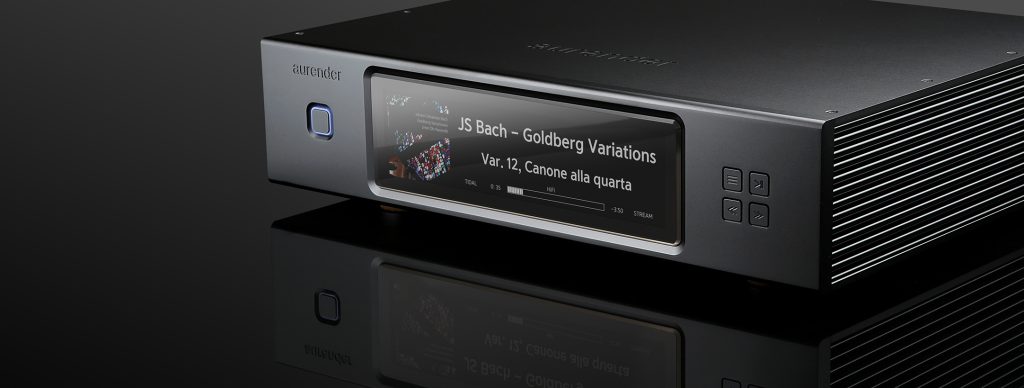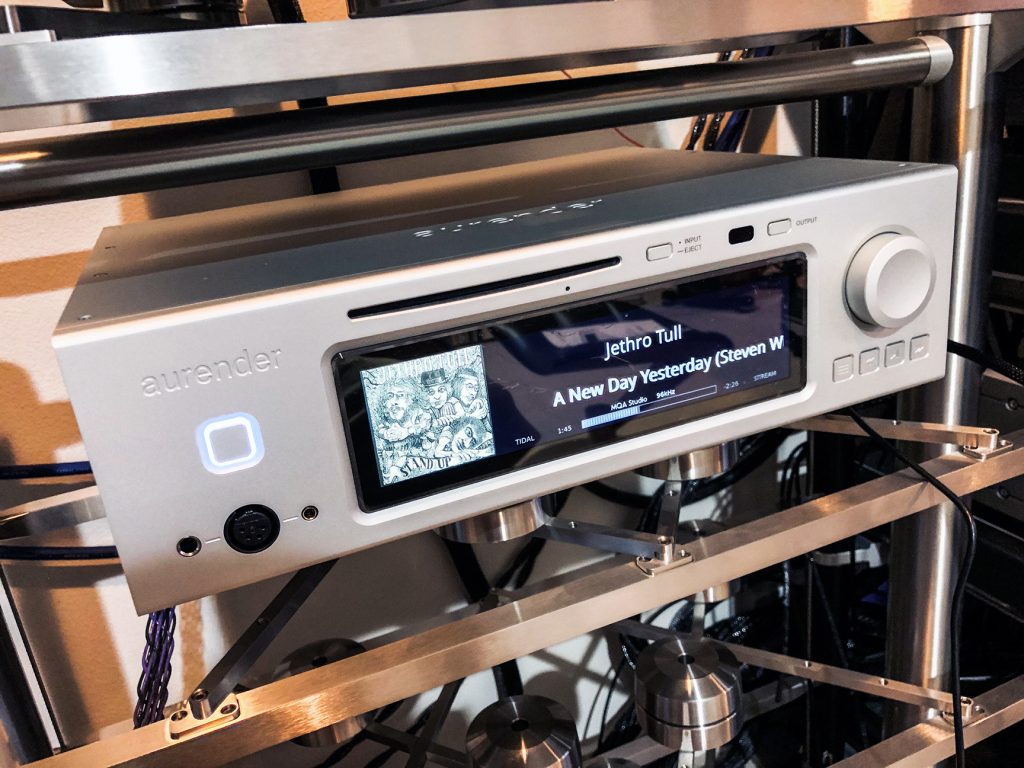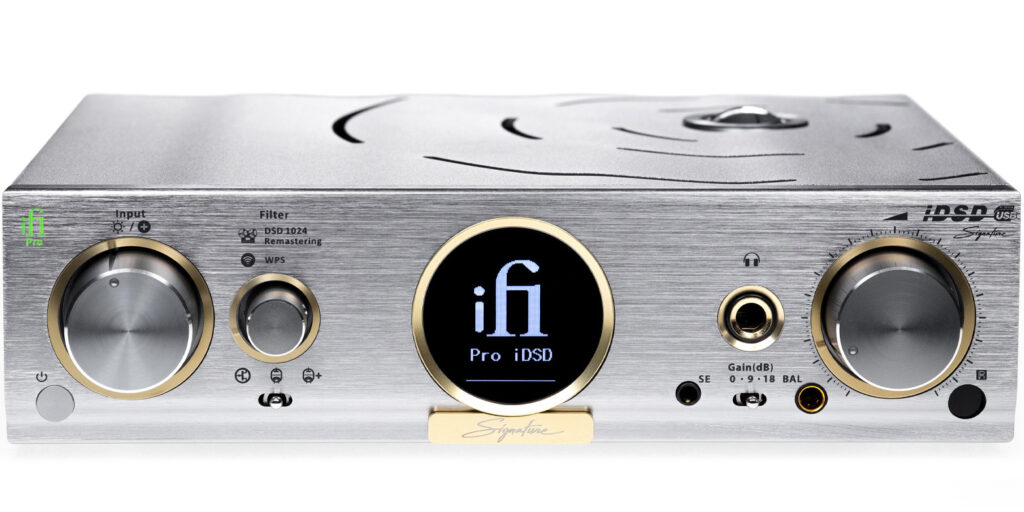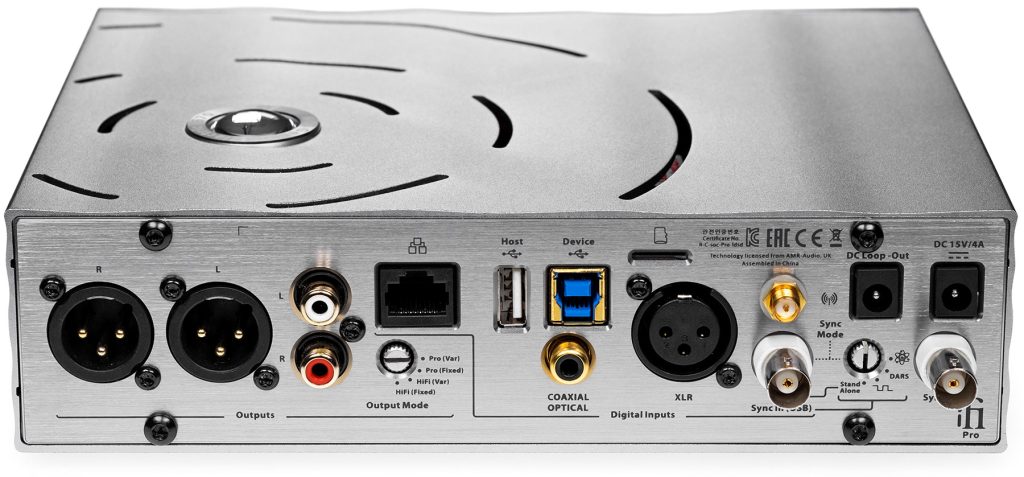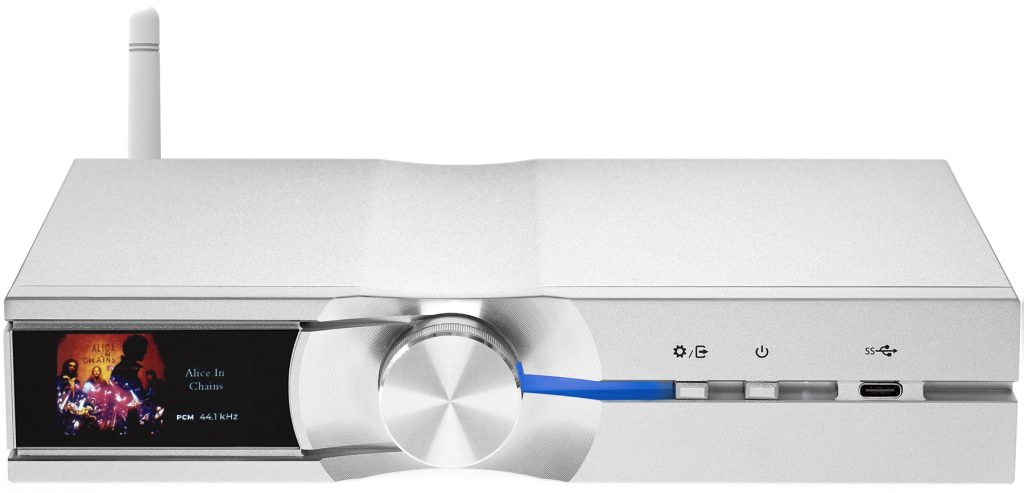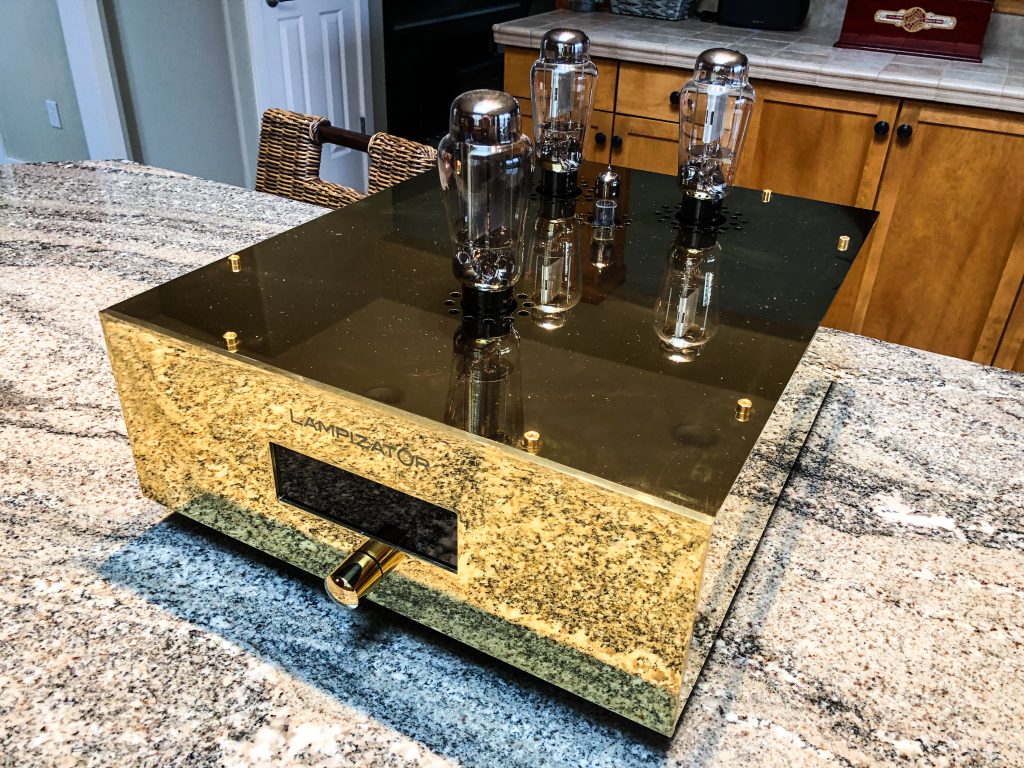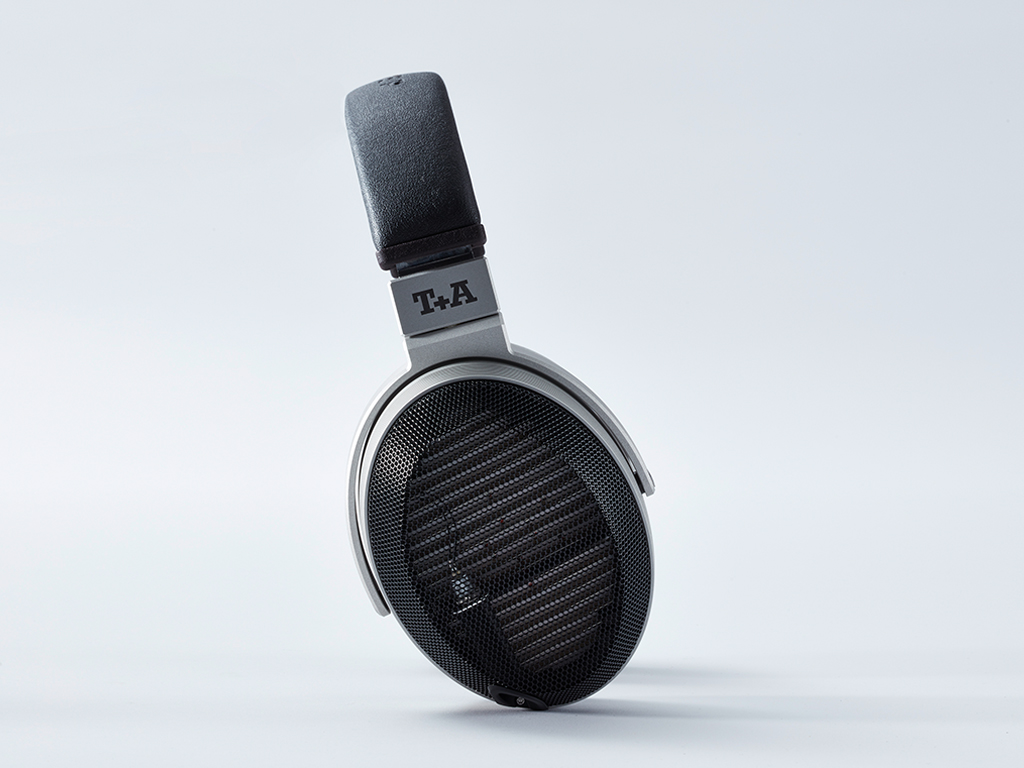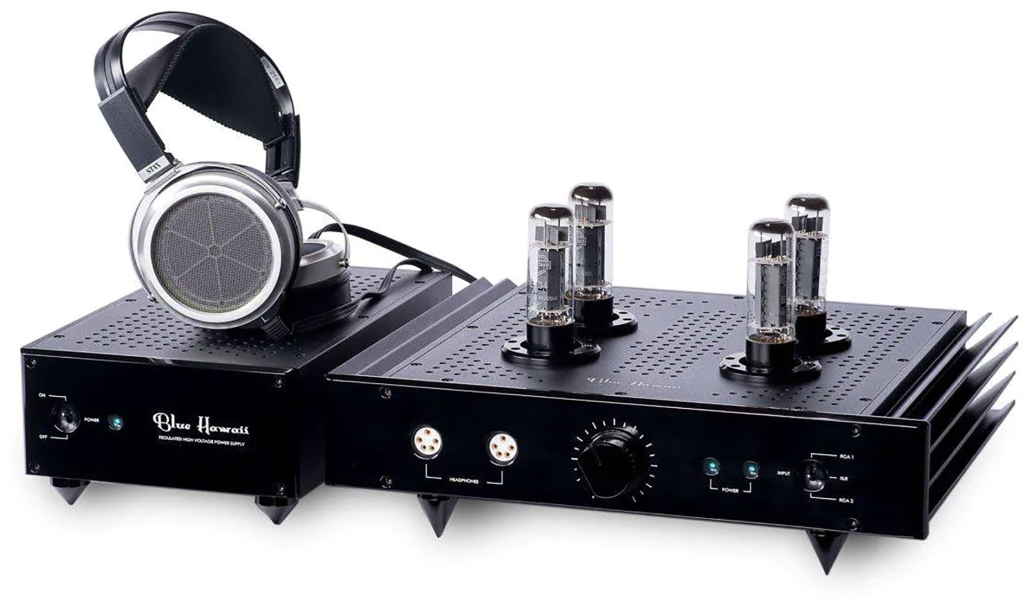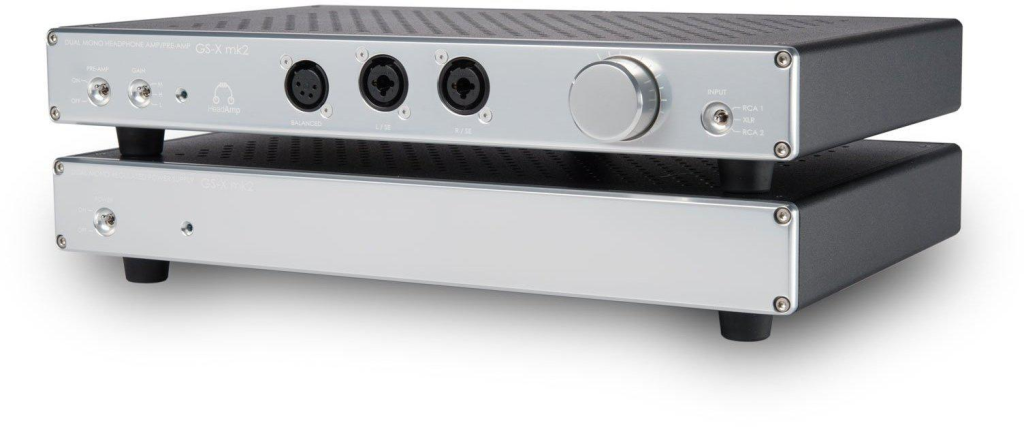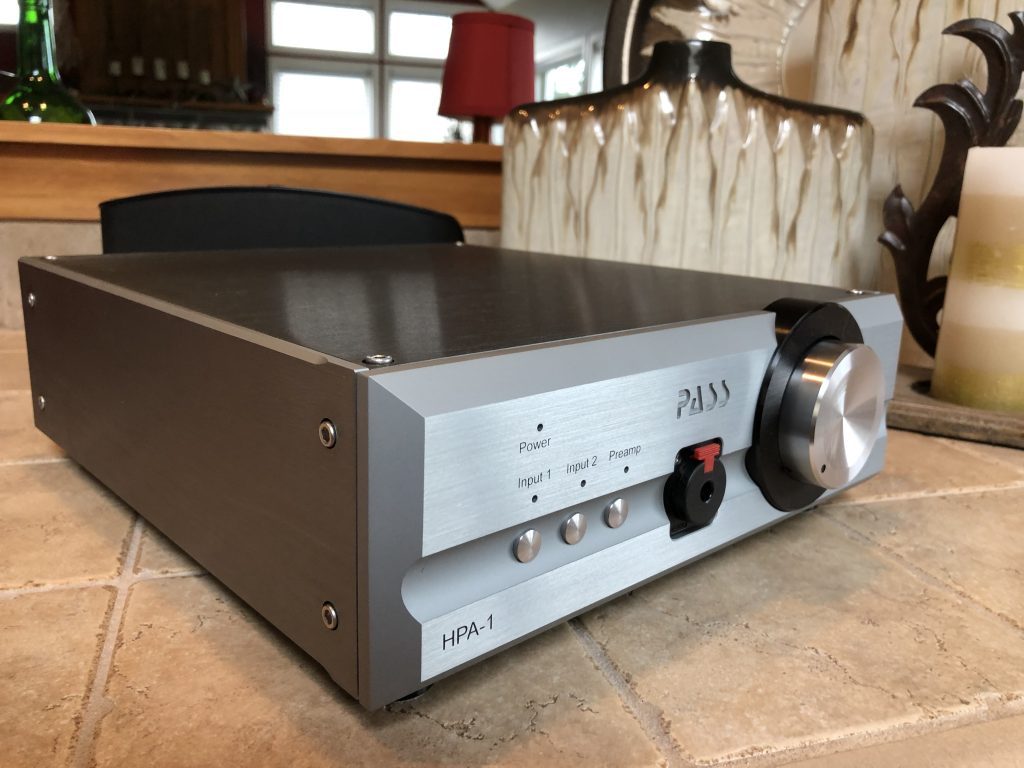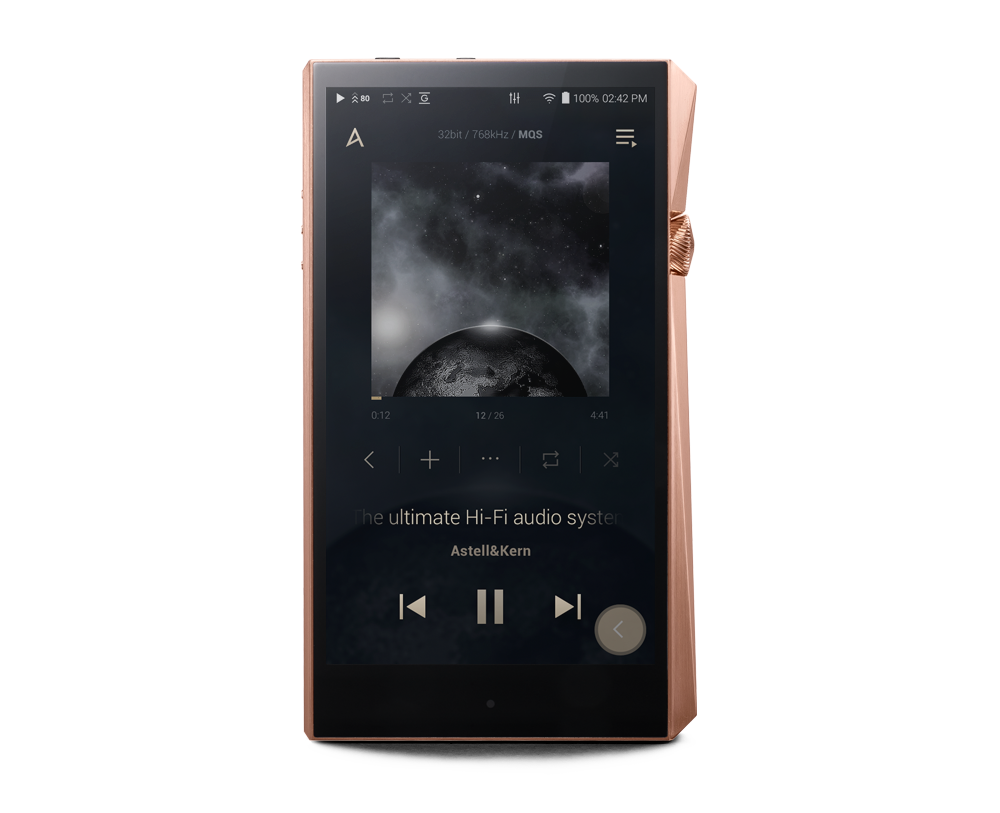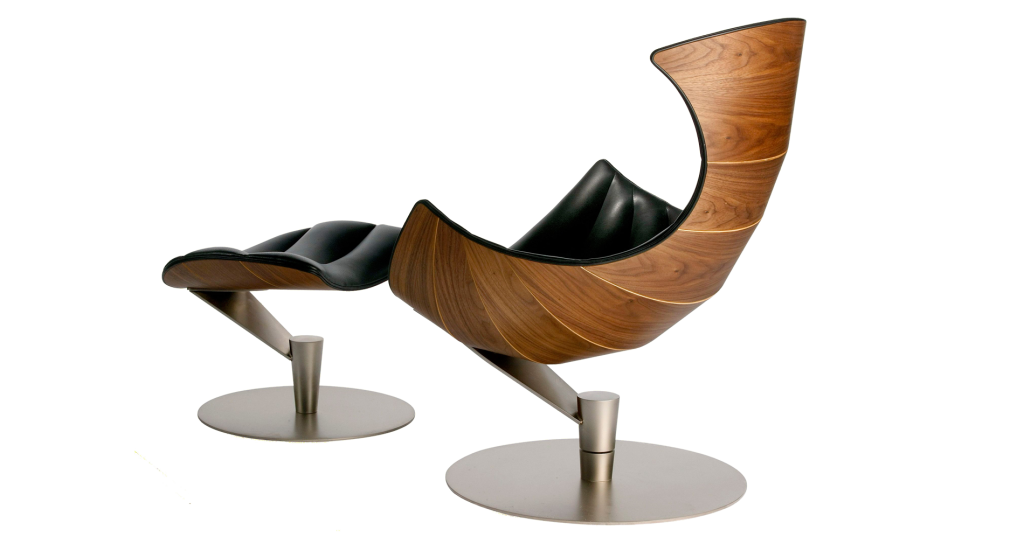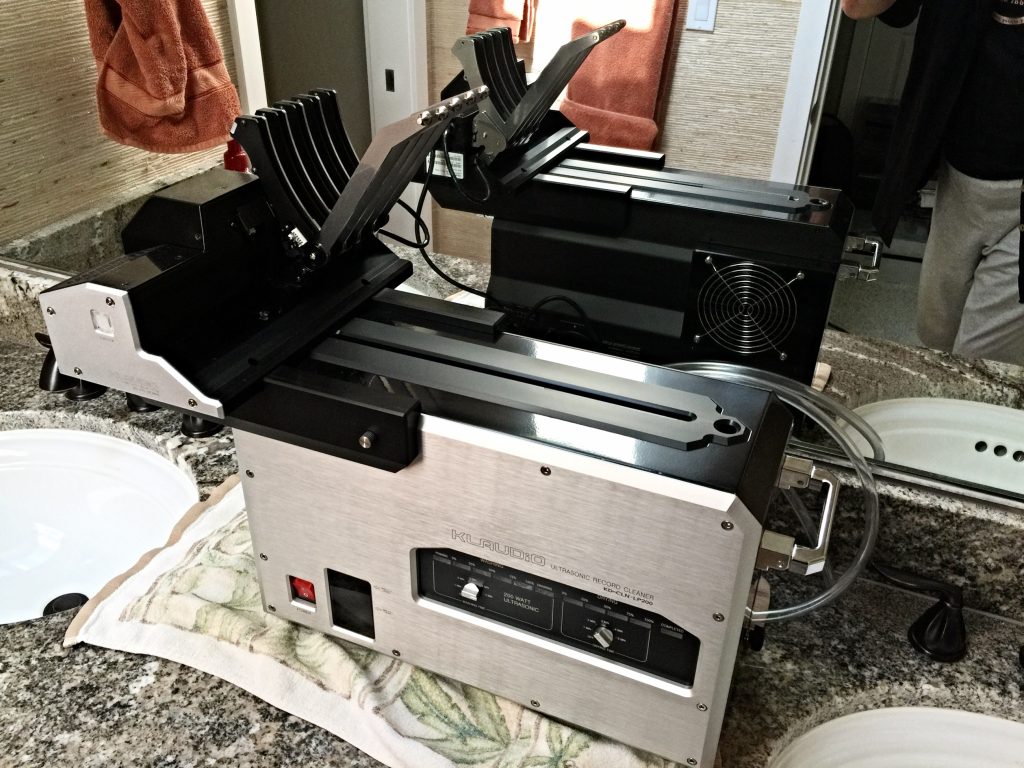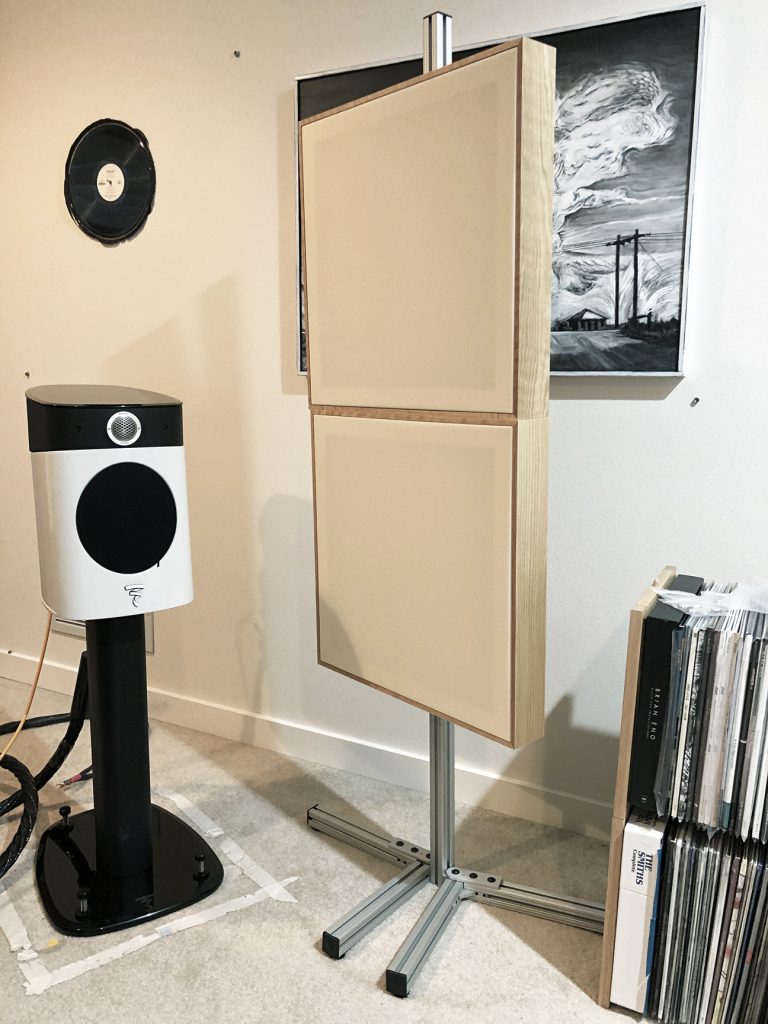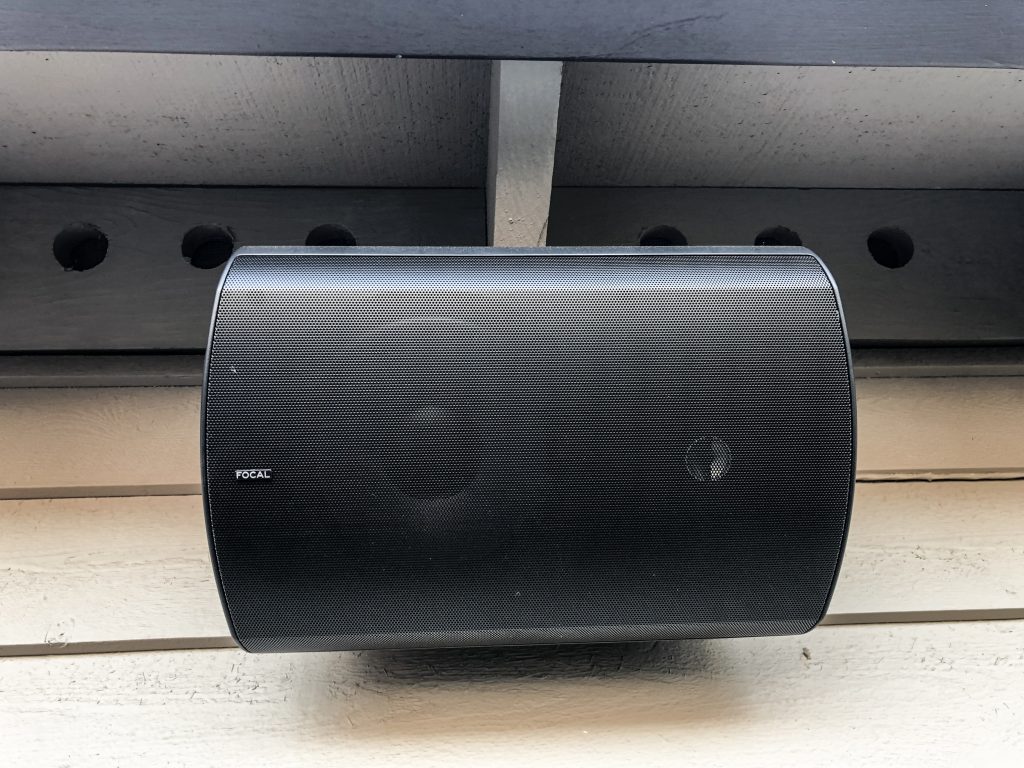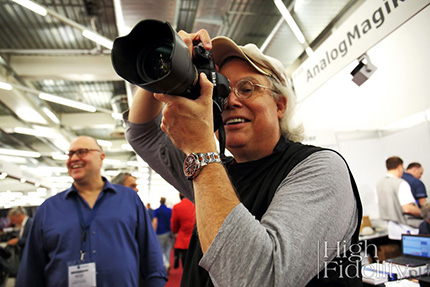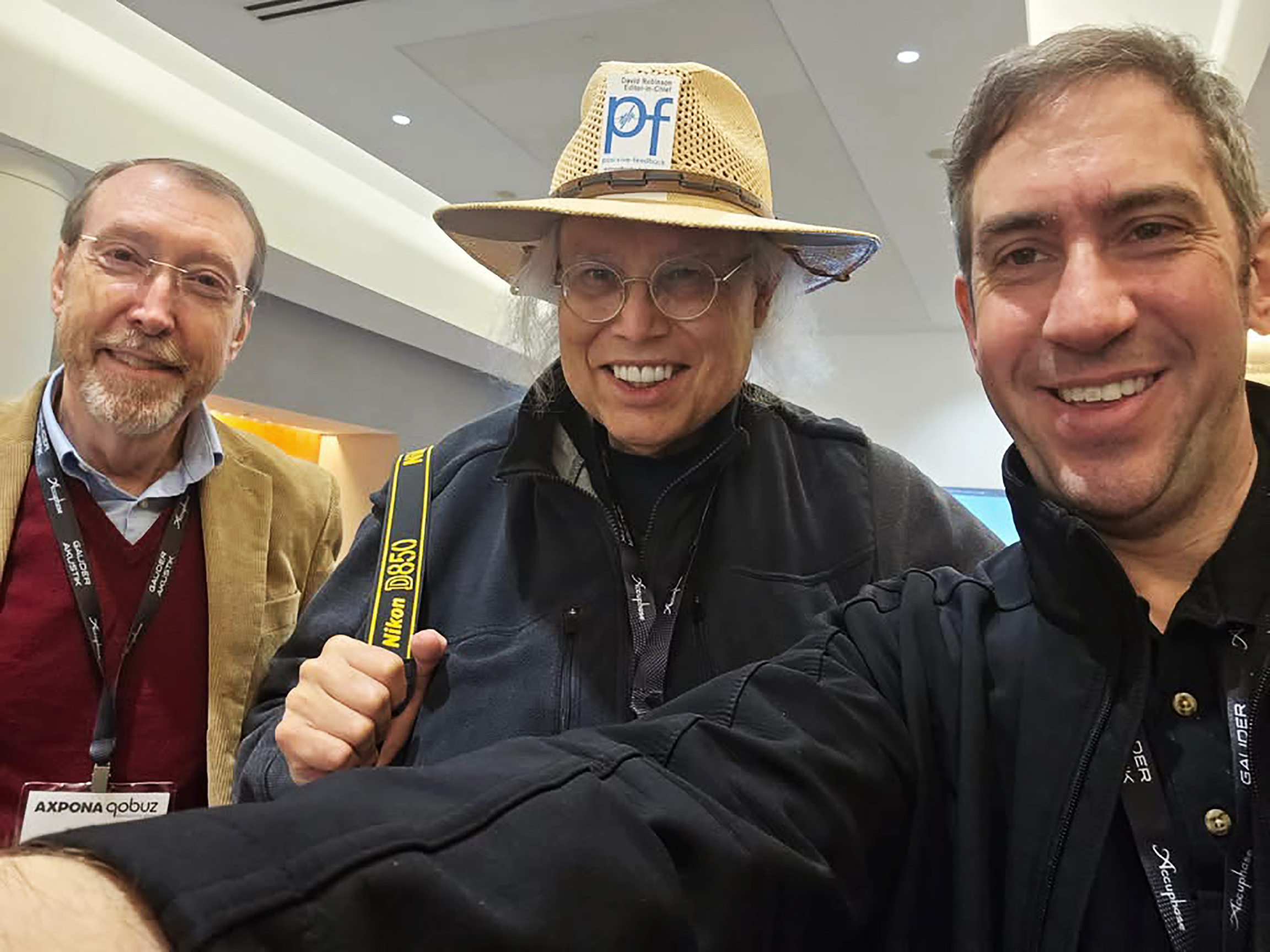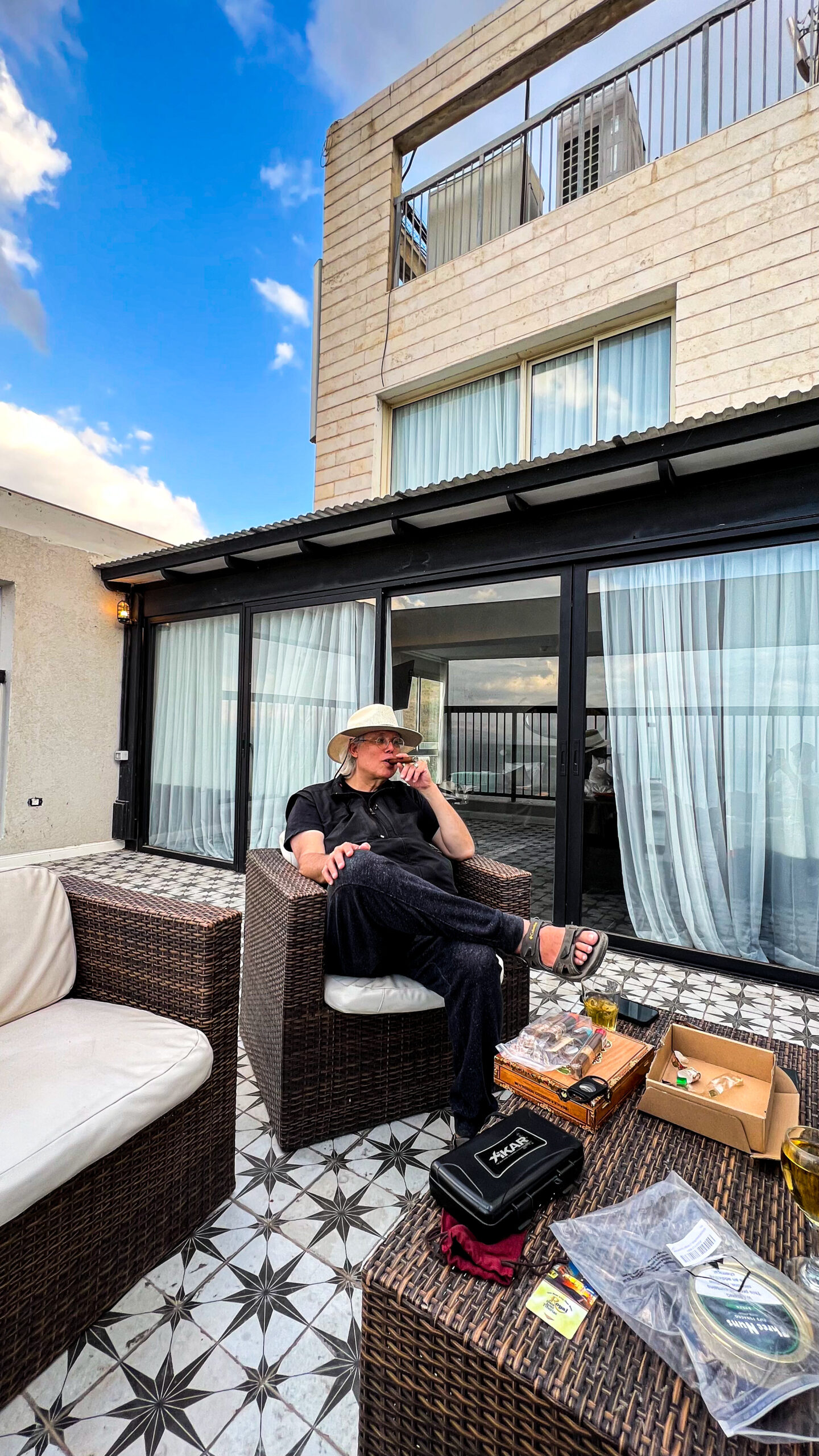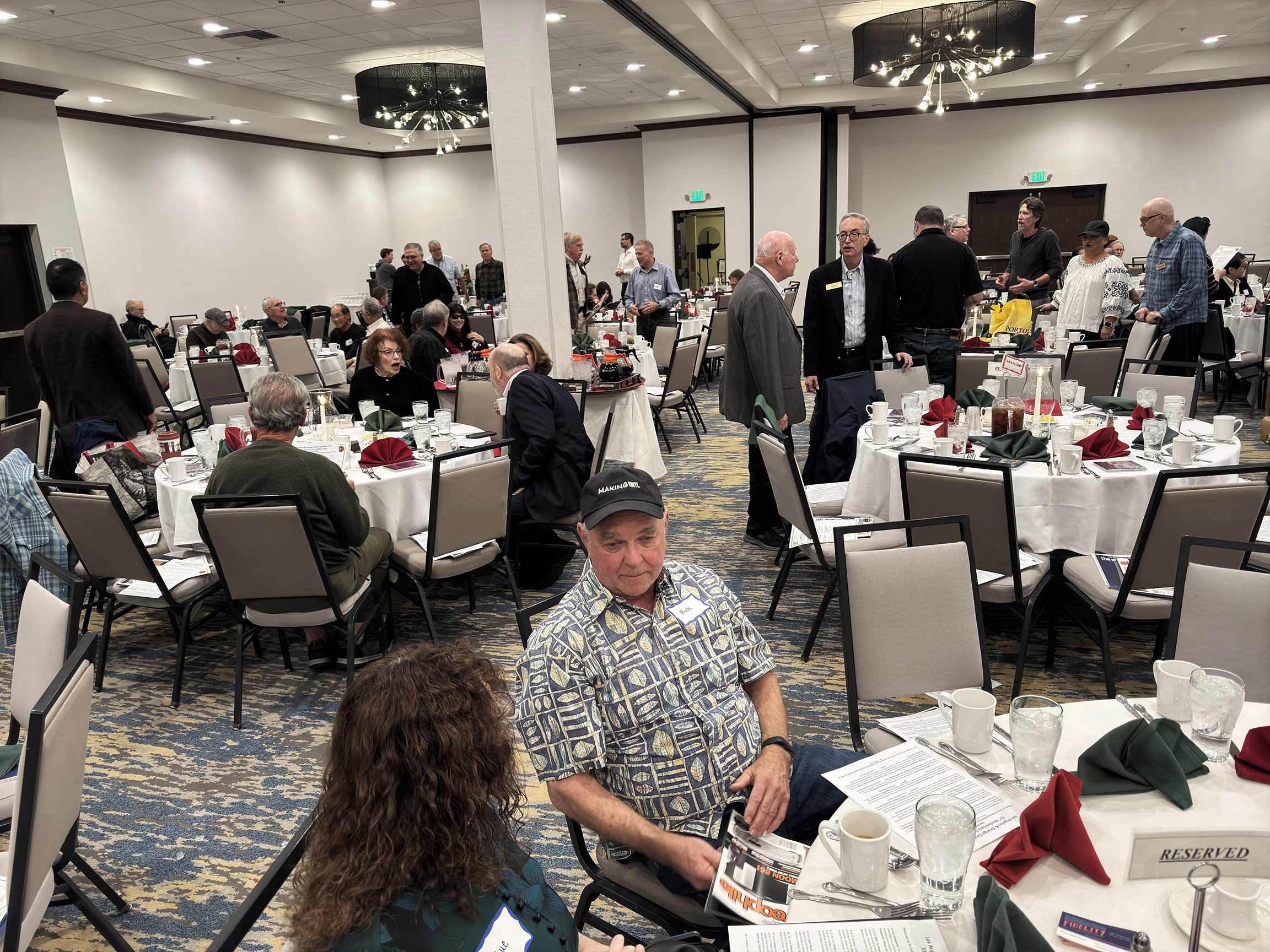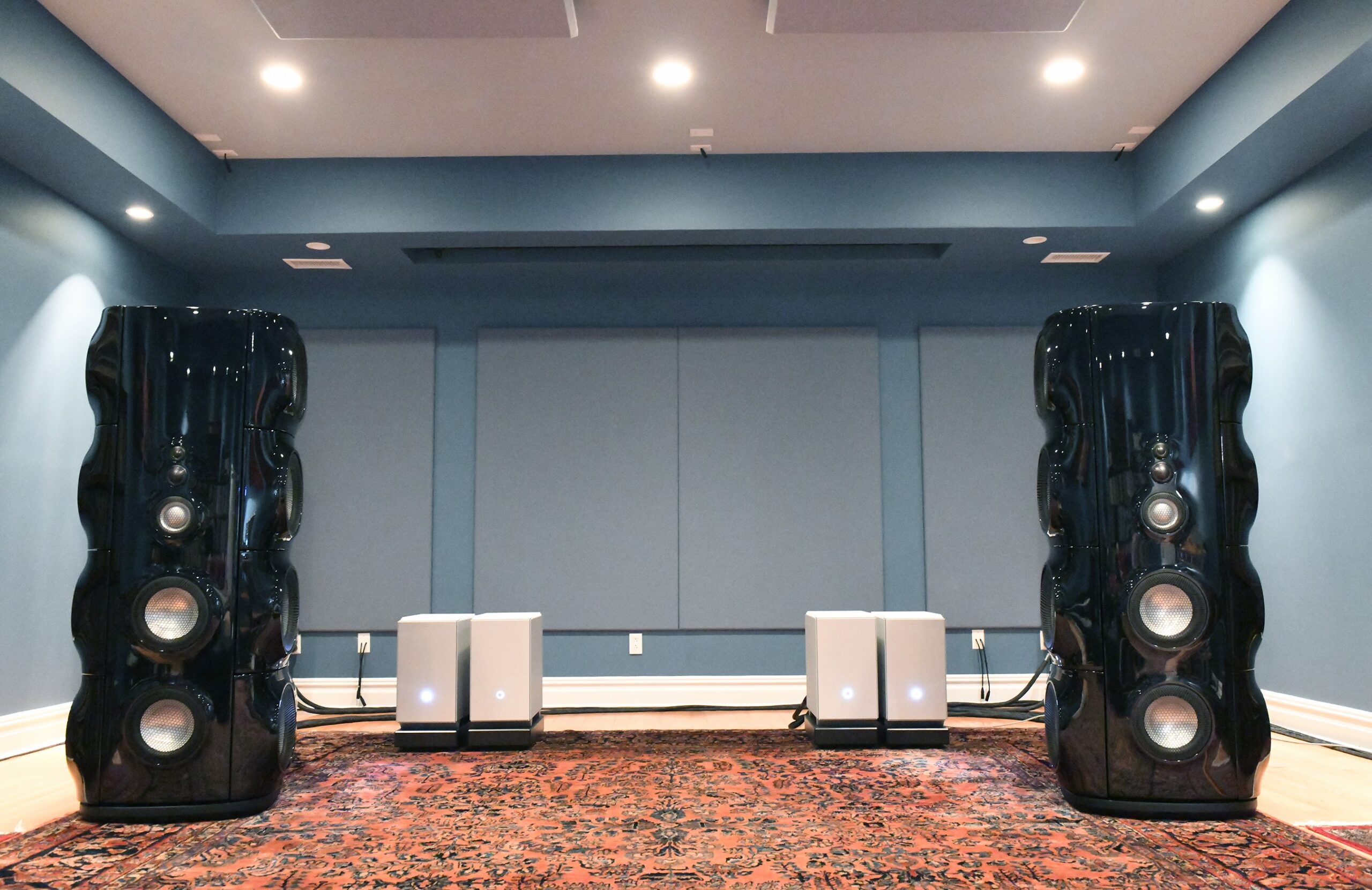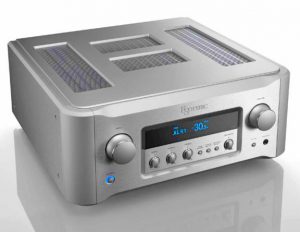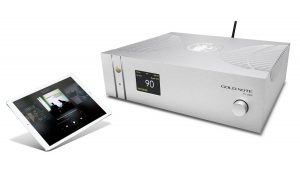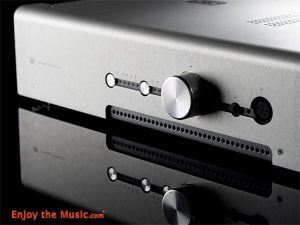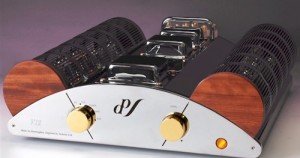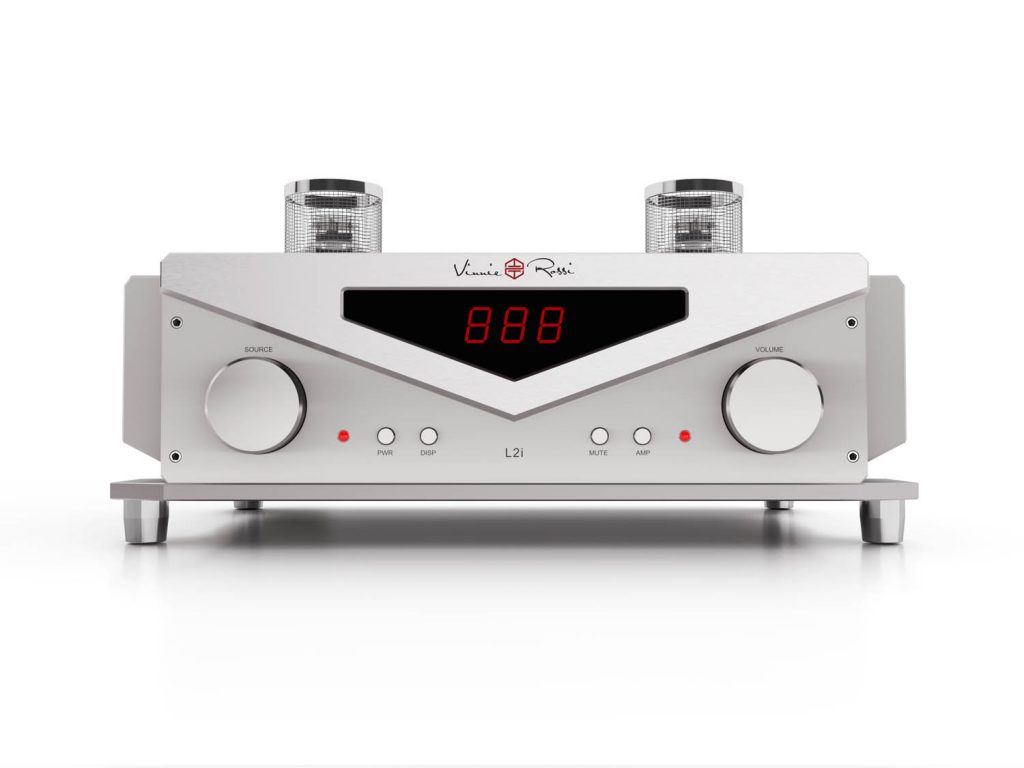
The Vinnie Rossi L2i SE Integrated Preamp with DAC and Pono Section (image courtesy of Vinnie Rossi Audio)
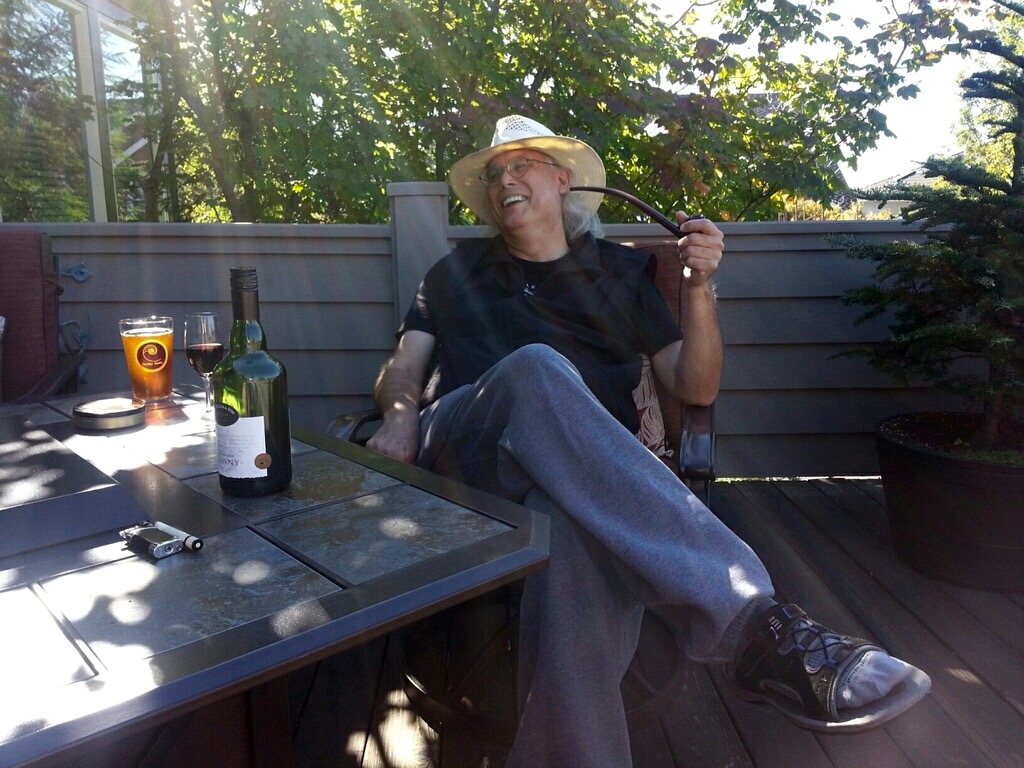
Ye Olde Editor, in situ (portrait by John Robinson; image processing by David W. Robinson)
Mark Sossa is a very discerning man, and a successful US distributor offine audio with his company, Well Pleased A/V. He knows what good is.
And Vinnie Rossi of…well, Vinnie Rossi…is a growing master designer of fine audio. He knows what good is, too.
Bring the two of them together, and pow! What a connection!
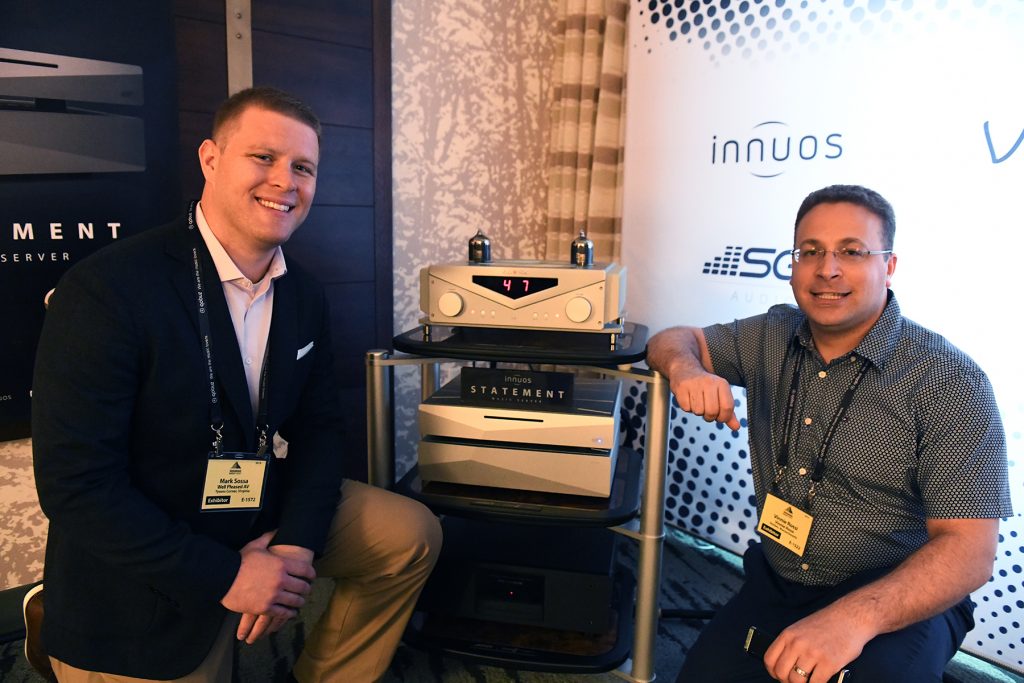
Mark Sossa of Well Pleased A/V and Vinnie Rossi of Vinnie Rossi at RMAF 2019 (photograph and image processing by David W. Robinson)
Mark, Vinnie, and I crossed paths at 2019's Rocky Mountain Audio Fest. It was there that I got a chance to meet Vinnie, and spend some time listening to an Innuos front end and Qln loudspeakers at the further end. In between was an integrated amp that was ultra-cool looking, and sounded bloody wonderful!
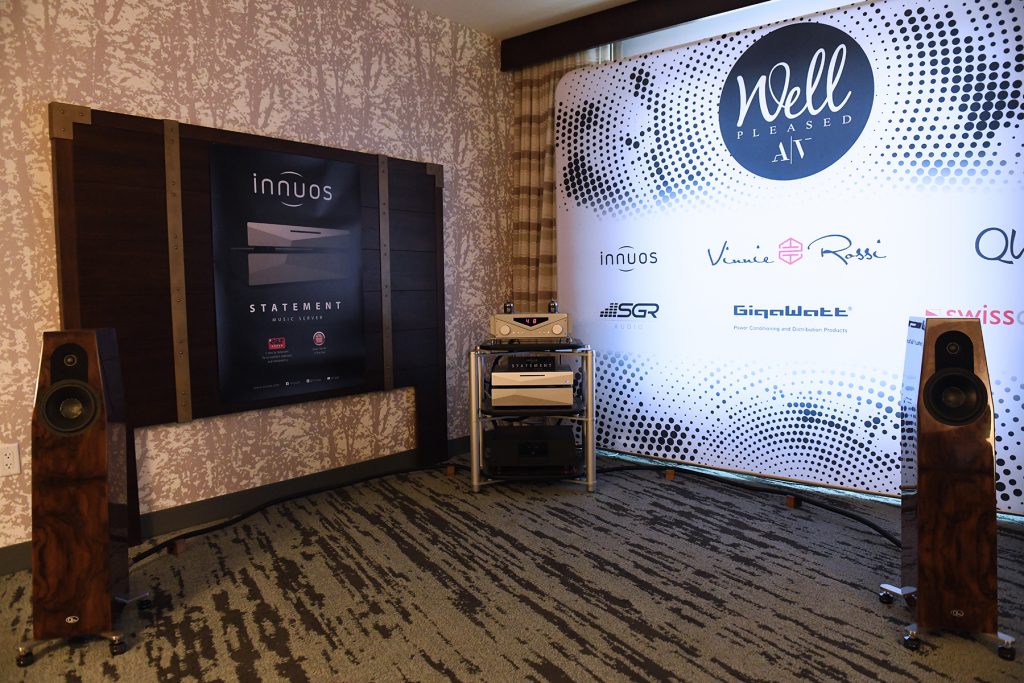
In the Well-Pleased AV room at RMAF 2019 (photograph and image processing by David W. Robinson)
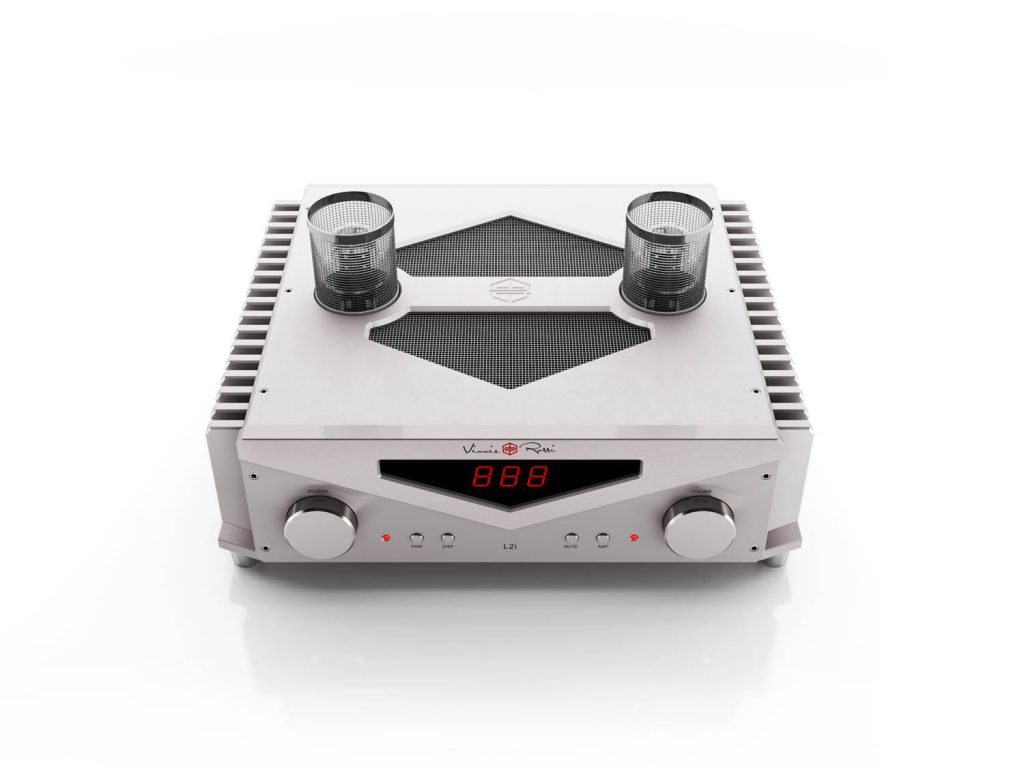
This was the Vinnie Rossi L2i SE, the special edition of their L2 integrated. This turned out to be a hybrid design, featuring a dual-mono, class-A topology with zero feedback. It has the ability to use 2A3, 45, 300B, PX4, 101D, 205D, and SV811 DHTs, depending on your preferences. The DHT filament voltage is switchable, depending on the needs of the tube compliment: 2.5 Volt, 4 Volt, and 5 Volt. The output section is composed of a Class A/B MOSFET, with only a single pair of output devices. (The less, the merrier with MOSFETs, as I learned from the GamuT M250i reference monoblocks.) The L2i SE also has the ability to bypass the DHT section, and go all-MOSFET, which some may find useful. (Personally, I stayed with the DHT SETs throughout my time with the review unit, as I was never tempted to wander off from the exceptional nature of the sound. Your mileage may vary.)
Anyway, I was unaware of Vinnie Rossi and his designs, but this little monster was dragging my soul away with the brilliant sound that I was hearing. I talked with Mark and Vinnie about arranging a review, which they were willing to do. Excellent!
Not long afterwards, the L2i SE arrived.
Technical profile and general description
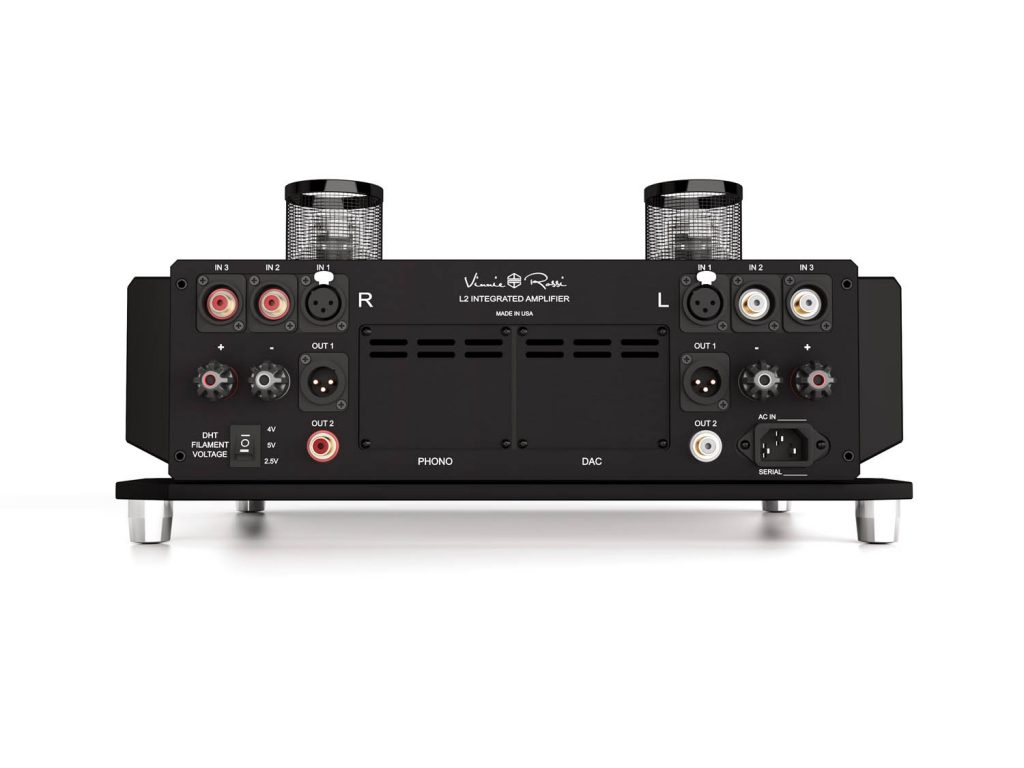
The technical profile of the L2i SE is different from that of many integrated amps, and quite impressive:
- Output Power (Tested with 120V AC input): 100W RMS per channel into 8-ohms (170W RMS per channel into 4-ohms)
- Output Impedance: Approx. 0.1 ohm
- Input Impedance: Approximately 10k ohm (RCA and XLR inputs)
- Frequency Response: 0.5Hz – 150kHz (+/- 1dB)
- Voltage Gain: 32dB (with stock EH300B tubes); 24dB (DHT Bypass Mode Enabled)
- THD+N (with stock EH300B tubes): Less than 0.5%
THD+N (DHT Bypass Mode Enabled): Less than 0.01% - AC Input: Factory configured for 110-120V AC, or 220-240V AC (50/60Hz)
- Protections: Fused inputs for linestage and power output stage sections
MOV (AC input surge protection)
Output short circuit protection - Dimensions (with tube covers and isolation base installed): Approximately 17.25" wide x 14.5" deep x 8.88" tall (438m x 368mm x 226mm)
- Weight: Approximately 50lbs. (23kg)
- Shipping Weight: Approximately 60 lbs. (27kg)
Volume Control: 64 steps (approximately 1dB per step) from -∞ to +8dB - Balance control: 24 steps from L to R (approximately 1dB per step)
There are three inputs, two unbalanced and one balanced. On the output side, you can either go unbalanced or balanced, using the L2i SE as a preamp, or you can hook up your loudspeakers directly to the WBT NextGen 0703cu speaker binding posts. Very flexible.
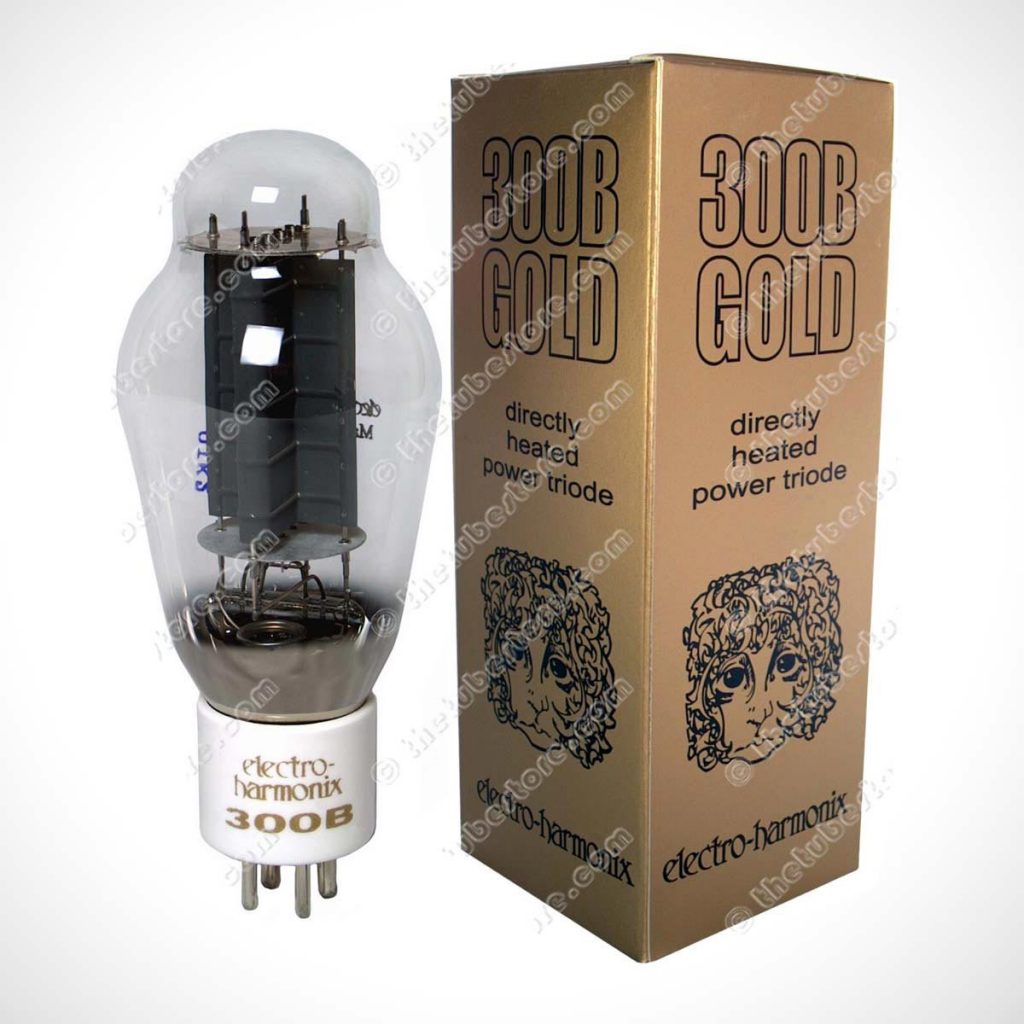
The output power is quite solid for a hybrid design, using a matched-pair of the stock electro-harmonix EH300B Gold Grid tubes, and should drive all but the most inefficient loudspeakers. Even the very fine Focal Sopra No. 1, which has an efficiency of only 89dB/watt/meter, and a nominal impedance of 8 ohms but dips to 3.9 ohms, was easily driven by the L2i SE. Check out the excellent frequency response too, which in these days of high resolution is a major strength. The specs say that the volume control is a "discrete, 64-step resistor ladder volume control using Pickering England silent signal relays." What I can say is that the feel of this control is quite seductive…silky, detented operation, with a rock-solid feel.
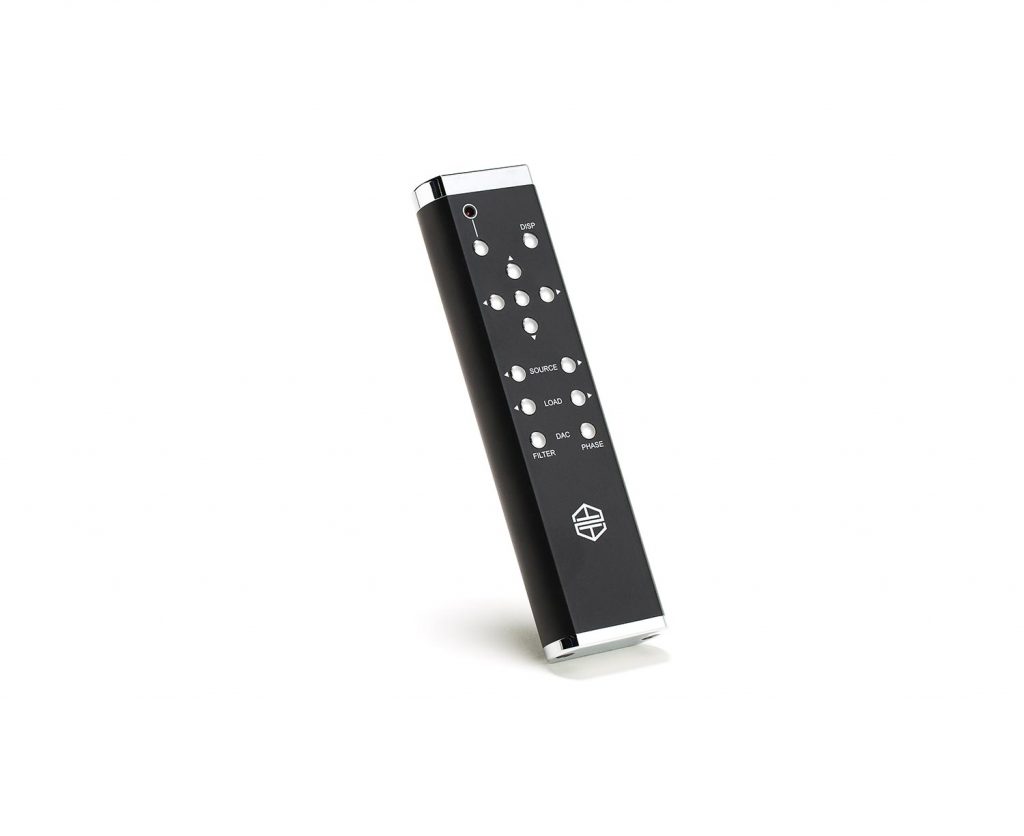
There is a serious metal remote, which I really liked, but I can tell you that if you do use the front volume knob, you're going to love it.
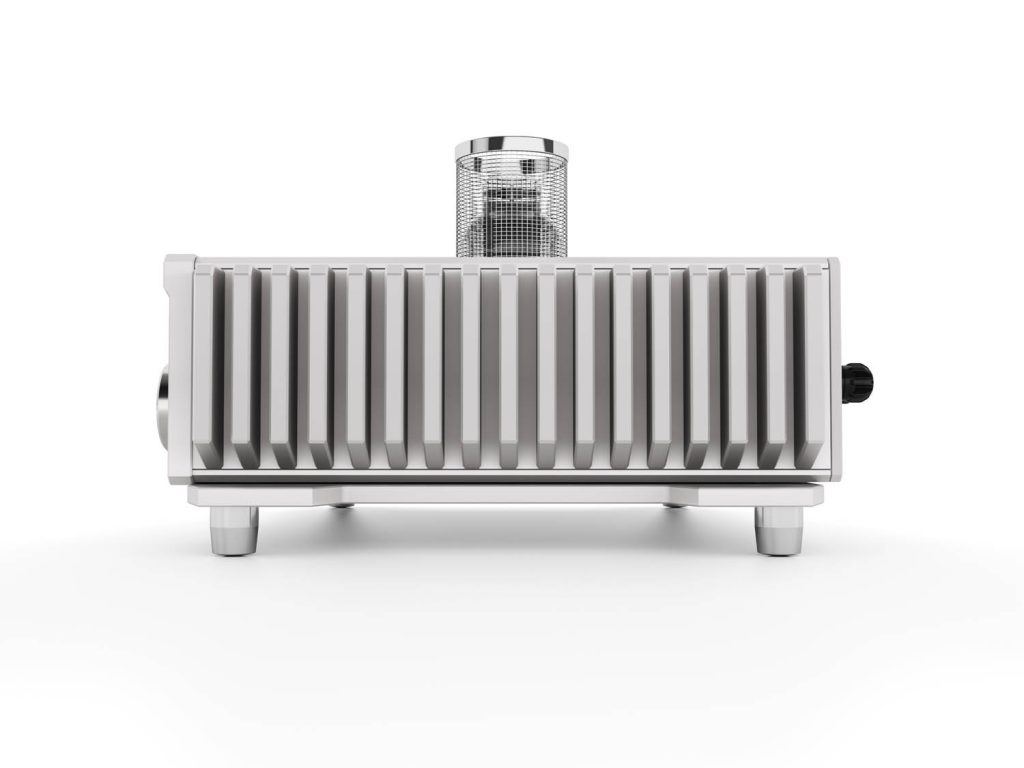
The chassis is very impressive, being CNC machined from aluminum, with integrated Stillpoints Ultra Mini Isolation Feet. (That's a fine touch; I have great regard for Stillpoints Isolation Feet.) That's why the L2i SE tips the balance beam at a hefty 50 lbs.
All this and a ten-year warranty too. Outstanding support!
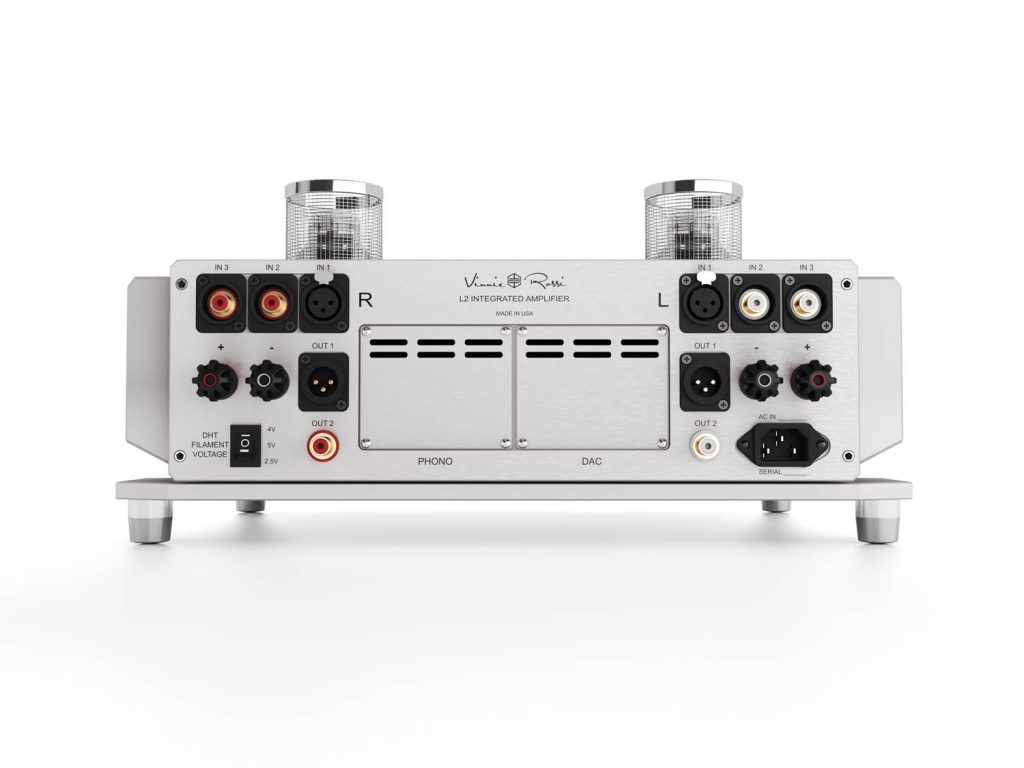
Better and better: There are optional integrated DAC and phono amp modules available at $3,495 each. The optional Vinnie Rossi DAC is capable of DSD up to DSD512, and PCM out to 768kHz/32-bit. Bloody good!
The specs on the phono section are impressive, especially given the relatively reasonable price of this optional module (from the Vinnie Rossi Web site):
L2 Phonostage Features
- Inputs: 1 set of Moving Magnet (MM), 2 sets of Moving Coil (MC)
- Built-in, on the fly MC remote adjustable cartridge loading (10 – 1000 ohms). Cartridge load setting viewable from L2 front panel display
- Adjustable gain jumpers for MM and MC inputs
- Belleson Super-Regulated split-supply voltage rails
- Four low-noise and low distortion gain stages. Each stage has a nominal gain of 20dB, resulting in higher bandwidth per stage and lower phase shift across the audio band
- Low output impedance design
- DC coupled from input to output (no dc blocking capacitors added in series to the signal path)
- DC Servo keeps output offset negligible
- Design optimization for lowest value thin-film resistors, resulting in the least possible noise
- High accuracy resistors and capacitors used throughout
- 4-layer PCB with separate ground planes for analog and digital (control circuitry)
- Cardas Audio input jacks
- Connect up to three tone arms and switch between them via L2 front panel or the remote handset
- MM Gain Settings: 40dB, 46dB
- MC Gain Settings: 60dB, 66dB, 72dB
- Output Impedance: < 100 ohms
- Noise (3Vrms output, 1kHz): > 90dBV
- THD (3Vrms output, 1kHz): < 0.002%
- RIAA Accuracy (20 – 20kHz): +/- 0.5dB
- Output DC Offset Voltage: < 2mV (servo controlled)
The design of the phono section was done by Brian Lowe of Belleson, whose super-regulators are used throughout the L2 line of products. At $3,495, I consider the capabilities of the phono section to be in the "killer!" range. 1 MM…2 MC inputs…good! And the MC gain settings are just what the doctor ordered. I didn't have a chance to listen to either the DAC or phono sections…not enough time, since I was concentrating on the preamp/amp performance on both XLR and RCA inputs…but to the extent that specs can tell us that a design is promising, and shows good ROI at the price point, this is really good stuff.
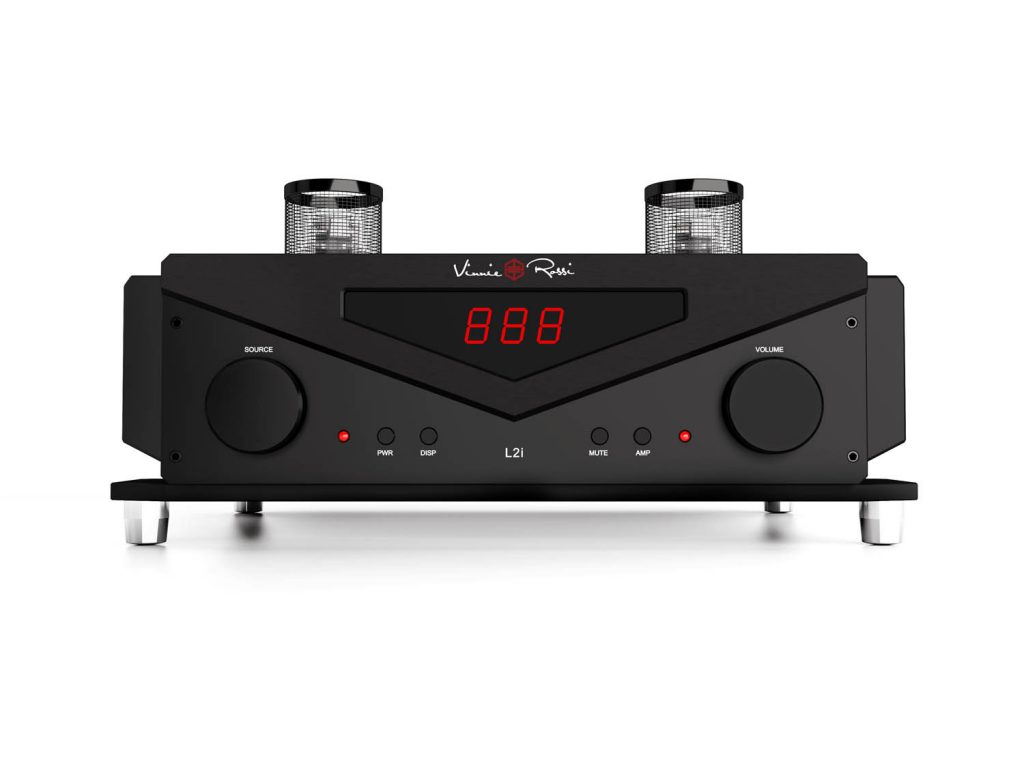
The System; the Sound
Now I have to confess that I have always been strongly attracted to Directly-Heated, Single-Ended Triode designs…when they were done at the highest level. When not…well, that's a different thing. There's just something special about what they can do for musicality in audio reproduction, a kiss of organic reality, a sort of harmonic rightness, that is utterly seductive when it is done well.
In spending months with the L2i SE, I used all digital sources in our reference office/desktop system room. Flowing down the digital signal river: The Internet came to us via our Xfinity gigabit feed, fed through their latest router/firewall to our managed Cisco switch system. The Ethernet cable to our DACs was Furutech's CAT 7, now sadly discontinued.
Our DACs included the exaSound DM DAC/Streamer, the Mola Mola Tambaqui reference DAC (both DSD256 designs), and the iFi Pro iDSD (up to DSD512, with oversampling to DSD1024, and PCM 768kHz/32-bit. More to come soon from me on this remarkable bang-for-the-buck DAC!).
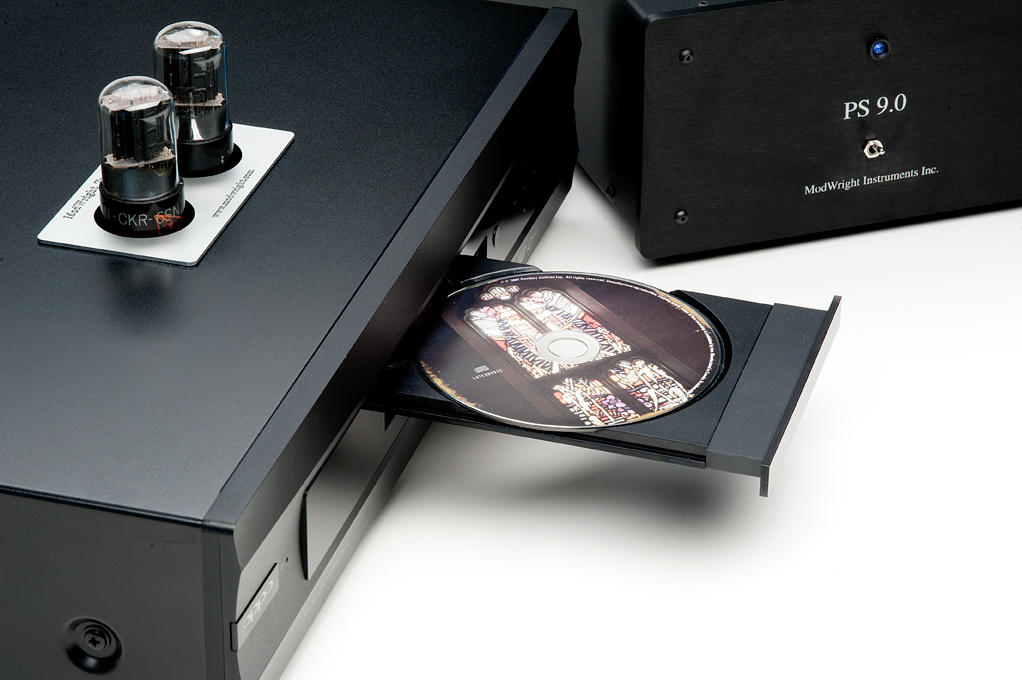
The ModWright OPPO Digital SACD/DVD-A/CD player system (image courtesy of ModWright)
For SACD, DVD-A, and CD optical disk playback, I used my modded OPPO BDP-105 with ModWright tubed PS-9 power supply and tubed output section. The results are always musical and pleasing…Dan Wright knows how to do righteous modding!
The amp stand and isolation feet for the L2i SE was my old friend, the Walker Audio Prologue Amp Stand with Valid Points. Quick, clean, and solid as a rock.
Cabling downstream (depending on a given configuration) included the TARA Labs […] for XLR and Loudspeakers, Kubala-Sosna Elation! and Realization (USB, XLR, and RCA), Skogrand Beethoven USB, and GamuT Loudspeaker (bi-wire). Power conditioning and distribution was via Furutech, Clarus Cables, and RSX (depending on configuration). The Furutech NCF Booster Brace was used for on the power connection to the L2i SE.
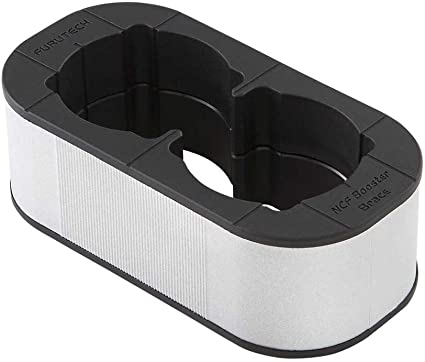
Don't underestimate this last, by the way. As I reported to the folks at Furutech about their NCF Booster Brace with the L2i SE system:
"…we have our Vinno Rossi L2i-SE reference integrated amplifier/DAC/phono amp and an iFi Pro iDSD DSD512-capable DAC/Headphone Amp/ Preamp sharing a pair of AC receptacles with a two-receptacle Booster-Brace via the Clarus Concerto. This is a very high-resolution system. Cables are a combination of TARA Labs (XLR and Speaker cables), Kubala-Sosna Realization Reference USB cable, Synergistic Research Galileo SX reference power cable, Skogrand Beethoven Power Cable, and Focal Sopra 1 Monitor Speakers and dedicated stands. I had been using this combination for several months now, plugged into the same receptacles on the Concerto that I used when I installed the Booster-Brace, and was using DSD512 and DSD256 albums as sources. The DSD512 from NativeDSD.com is particularly astonishing, although the DSD256 from various sources is also remarkable.
The results of the Booster-Brace in this application were immediately apparent to me: Greater transparency, more nuanced detail, and a sense of improved solidity in the imaging of all recordings that I've heard.
This is a notable achievement. At the DSD256 and (especially) DSD512 levels, the performance wrought by the Booster-Braces cannot be gainsaid. I would not want to be without it."
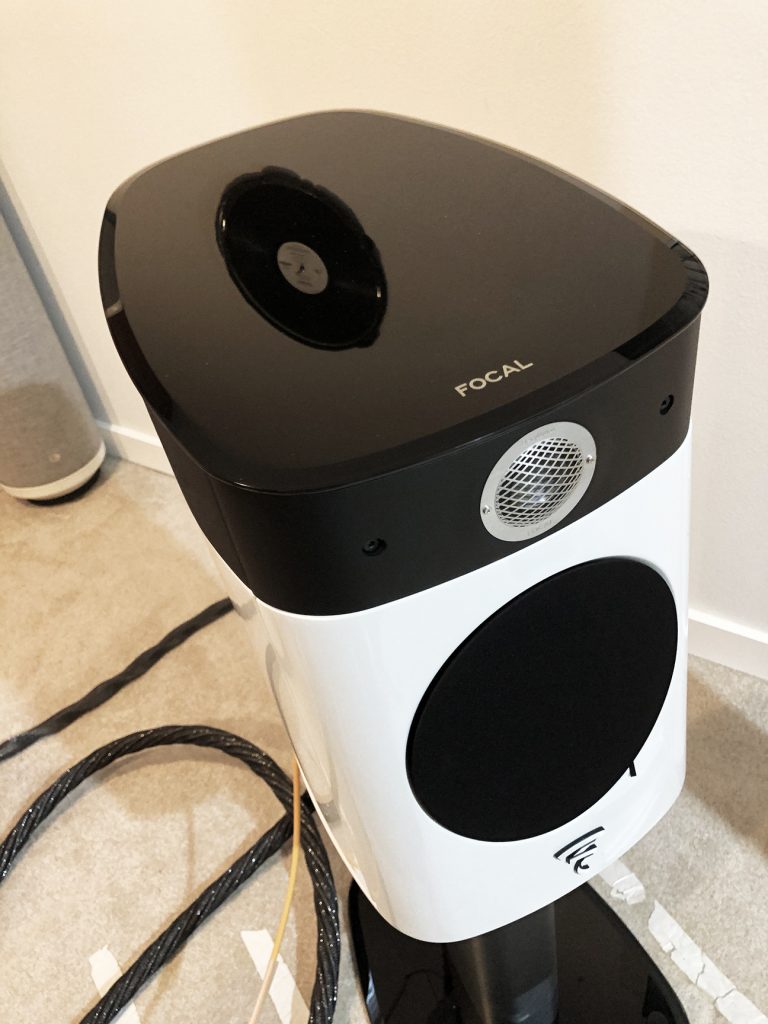
The Focal Sopra No. 1 monitor loudspeaker (photograph and image processing by David W. Robinson)
At the further end of the line were the Focal Sopra One monitors, very satisfying performers, indeed. I've had a lot of monitors here over the years, but the Sopra One's are an excellent balance of tonality, musicality, and detail that really please me each time that I listen to them. They certainly did hook up with the L2i SE, like wine and cheese, or great Port and a fine cigar!
For this review, I had access to both Roon-based Qobuz and TIDAL (MQA and otherwise streaming PCM sources, as well as LAN-based DSD (up to DSD512) and PCM sources (up to 192/24). As usual, I broke-in the L2i SE for a week or two, playing mainly DSD256 sources through it to assure that I was working out the extended frequency range and dynamics of that format. I would sandwich in extended sessions with Qobuz and TIDAL to bring PCM into the mix.
There were a great variety of LAN-based and SACD albums that I used during the time of my review of the L2i SE, far too many to detail here. Among them were DSD64, DSD128, DSD256, and even DSD512 from NativeDSD.com. NativeDSD has an extraordinary collection of labels and music, all with DSD and DXD master-quality titles easily available. DSD256 and DSD512 (in particular) are my reference-standards for digital audio, since they are amazing in their ability to deliver mic-feed and master-tape resolution.
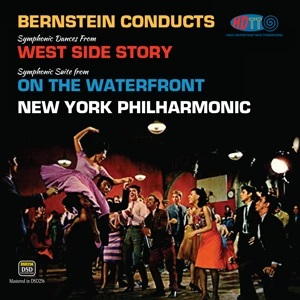
Also in the mix were dozens of recordings from Robert Witrak's stellar download site, High Definition Tape Transfers. Bob has a very different A&R going for classical and jazz recordings, all transferred to various resolutions and types of audio formats. I am particularly fond of his purist transfers to DSD256 of his high-quality source tapes. He carries recordings that you won't find much of anywhere else. Note that he also has PCM versions available, for those who prefer (or who can only handle) that format.
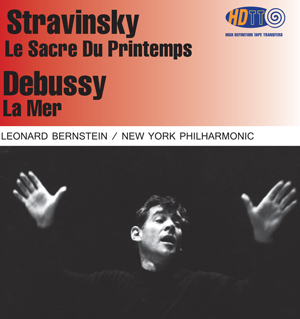
I don't do many music reviews…not enough time!...but I reviewed two in particular of HDTT's brilliant transfers of Leonard Bernstein to DSD back in Issue 110. You'll find my comments HERE. I included mention of the L2i SE in the mix.
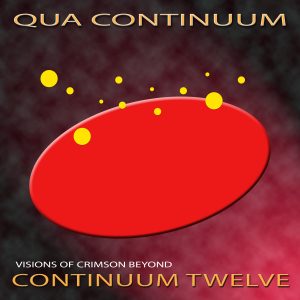
Cookie Marenco's Blue Coast Records, with tons of DSD recordings that are pure and wonderfully produced in a number of genres, provided me with hours of listening via the L2i SE. Just the Qua Continuum ambient music series…in twelve albums no less…provided me with endless delight. (Twelve albums. "Endless" is no major exaggeration. But I have listened through the entire series several times, great ambient music being something that I love very much.)
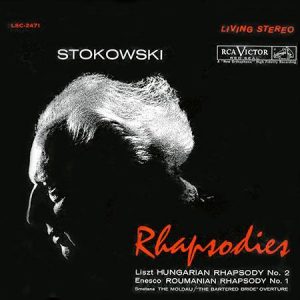
And yes, there were some DSD titles from Acoustic Sounds, as well. (My old friend Leopold and his Rhapsodies"!) Plus SACDs from my library of over 7,000 discs, far too numerous to mention over the extended period that I listened to the L2i SE, generally for 4-8 hours per day. Stacks of SACDs, endless streaming via our exaSound DM Reference DAC/streamer, and hours of LAN-based and NAS music files. Hundreds and hundreds of hours.
It did take the L2i SE 50-100 hours to shake off a bit of haze…nothing too serious…but then it began to bloom quite nicely. Somewhere north of 200 hours, things just start to happen. Any audiophile who has noticed the moment when bloom! happens will know exactly what I mean.
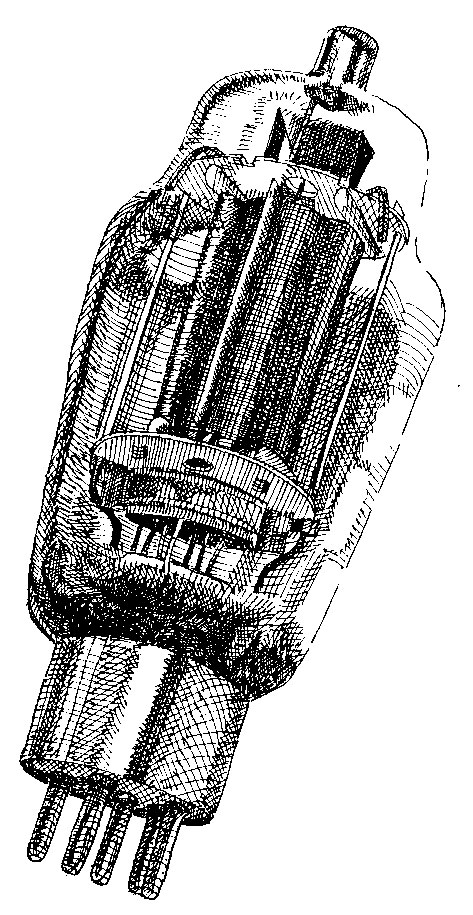
"SET Tube" drawing by Bruce Walker
Hybrid designs are an attempt to get the best by taking the best from both worlds: tubes, and solid-state design. Put tubes on the input, to get the really seductive kiss of the incredible harmonic structure of DHT SETs…then put the muscle and coherence of a tightly-matched pair (no more!) of MOSFETs on the output side, and…if you do things just right…real musical magic can emerge!
By doing this, for example, you can have extended frequency range, with no stereotypical roll off in the upper frequencies, and no flabby tubbiness in the bass-meant. Of course the midrange would be glorious…no surprise there…but the upper frequencies would supply megatons of air, spaciousness, dimensionality, and presence.

Dynamics would not be a problem at all. Bammo-slammo would happen, in spades. (In my case, the Focal Sopra No. 1's had all that they could handle.) SACDs like Audio Fidelity's Blade Runner soundtrack, or streaming M83's Oblivion soundtrack, or the soundtracks of Arrival, Chernobyl, Interstellar, and the Lord of the Rings via streaming all made the joint jump. No sign of sucking out, pooping out, or tiring out from the L2i SE. None, zip, nada.

Our Wolf Audio Systems QNAP 1273 2U NAS (Network Attached Storage) RAID 5 Server here at PF Central (image courtesy of Amazon/QNAP)
It was no different with our LAN-based/NAS-based resources.
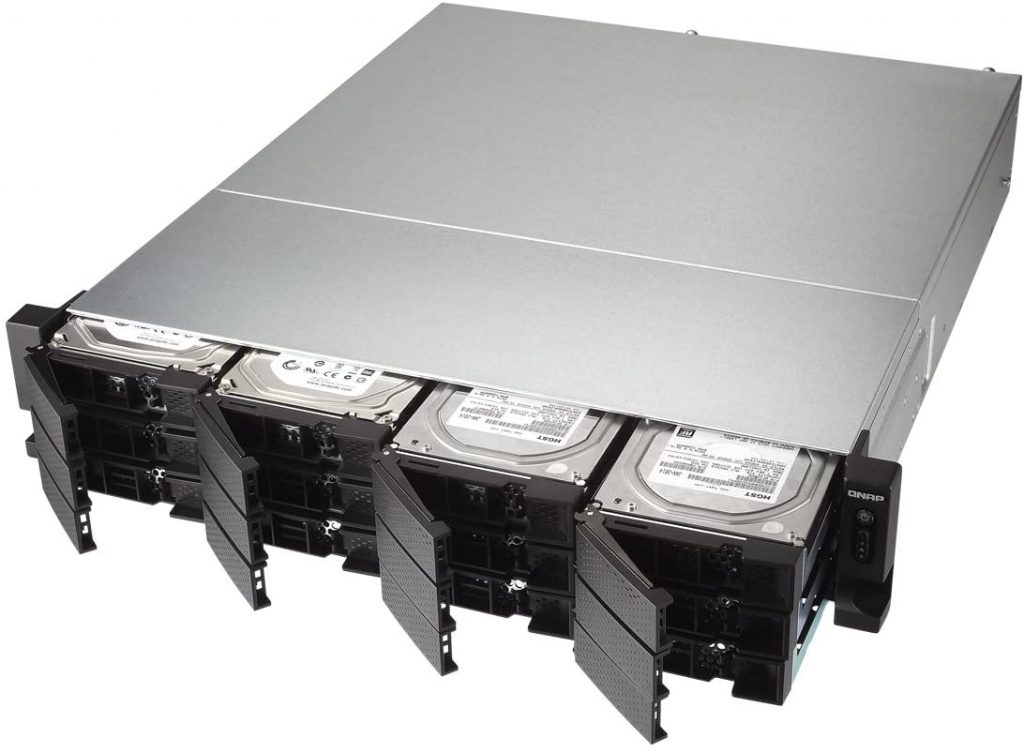
DSD all the way out to DSD512, which are particularly demanding, all arrived with effortless ease, something that surprised me somewhat, given the nominal 100 WPC power rating of the L2i SE (though with with Focals, it would be closer to 170 WPC in its dips to 3.9 ohms). Joe Parvey of Wolf Audio Systems did a magnificent job of assembling and setting up the PF QNAP NAS, and then assisted in the final polishing up via remote access. I recommend his products and services most highly, and will be commenting on his Alpha 3SX Music Server/Streamer in the near future. The performance of the Wolf Audio Systems NAS via Media Center 26 to any of our DACs to the L2i SE was simply flawless. (It had to be; I have extremely high expectations.)
The L2i SE simply produced quiet, cool, effortless music with aplomb. No sweat, no strain. No overheating, no bad habits, no "Oh no!" moments. Lord knows that I could do with more of this sort of thing in my life.
The combination of musicality and power, delivered with such finesse, carried out the promise of a hybrid design done in the challenging framework of DHT SETs.
Impressive as hell! And I hereby announce myself duly impressed.
End of the Curl…
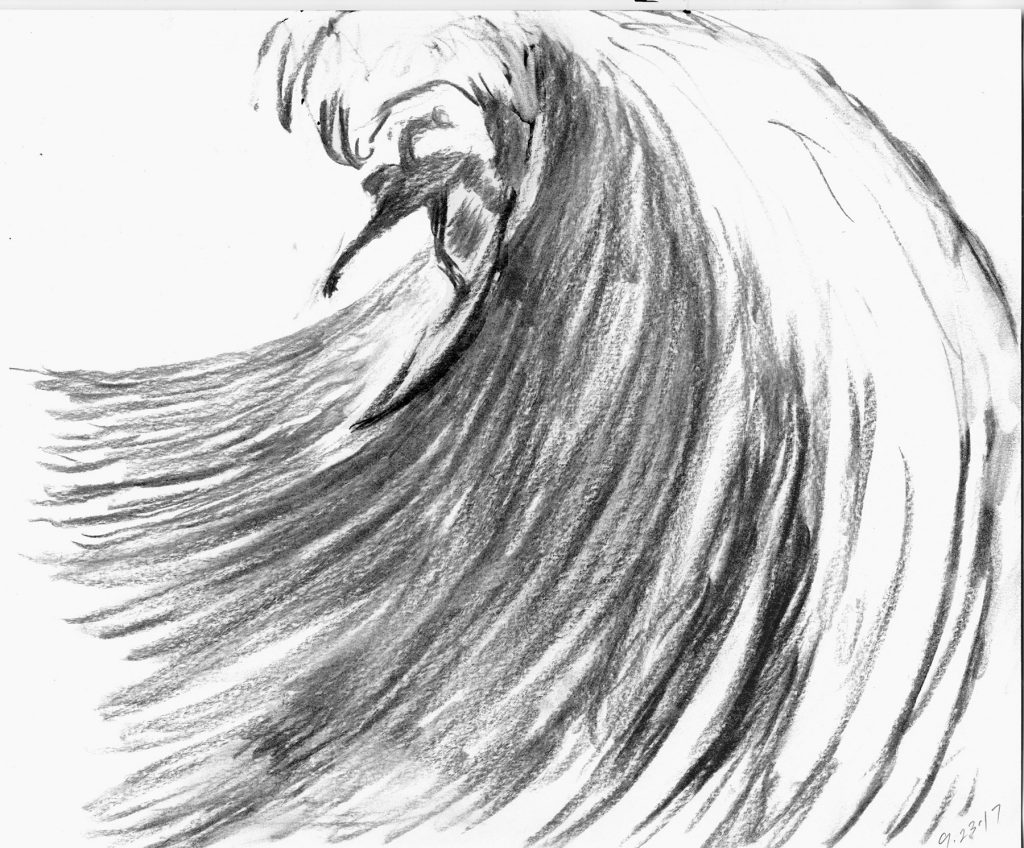
"Dropping in." Drawing by Dan Zimmerman, 2017
Well, what more can I say?
The Vinnie Rossi L2i SE certainly towed my heart away with a tremendously transparent, marvelously musical presentation and presence. In all of the formats that I tried, I didn't find a single "close but no cigar" element in its handling of any of our reference recordings or streaming sources. No "Yes, but…", no overemphasis on the midrange, no loss of harmonic balance, and no operational failures. (Those are more common than you might think.)
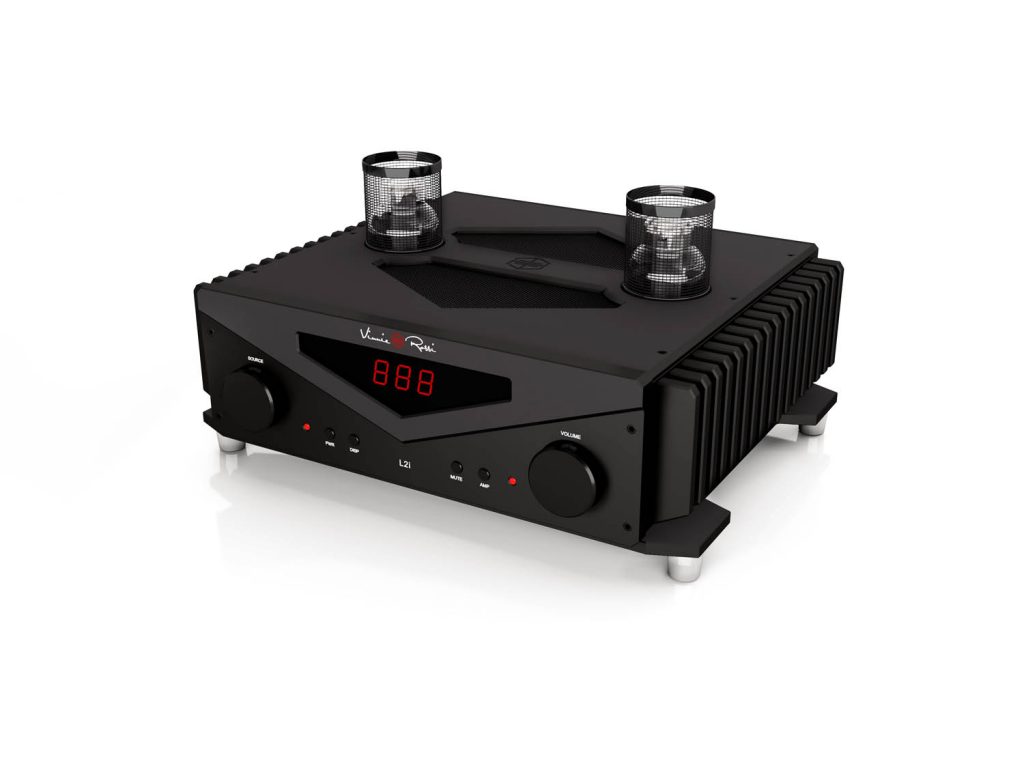
Yes, the base price of the Vinnie Rossi L2i SE does put it out of range for many people. Then again, many exceptional designs in high-end audio do the same thing. Ditto in most all of life: excellence arrives at a price. You're the only one who can decide if the price is worth the sacrifice. (Christ's "pearl of great price" and all that, eh?) And personally, when I consider that you get a smashing-looking integrated amp, with world-class audio performance and the ability to add a DAC section with up to DSD512 capabilities, plus a very promising phono section, all in one place…well, I'd say that you could save space and $$$ without compromising the quality of your musical experience. If you can handle the price range, then you really do owe it to yourself to consider the L2i SE. It's killer!
In fact, I am hoping to get a fully-loaded L2i SE back here at PF Central in the next few months. I really do miss it. Indications from Vinnie Rossi are that this will happen. Most excellent!
Meanwhile, I can say this with full confidence: The Vinnie Rossi L2i SE is a world-class, top-o'-the-heap integrated in my book. Lovely to look at; utterly seductive to hear. It will definitely be getting a Brutus Award from me at the end of 2020…no doubt about that at all.
And so, here's a Ye Olde Editor's "Very highest recommendation…enthusiastically!" for the L2i SE.
Pay attention. This is a very special product, amigos!
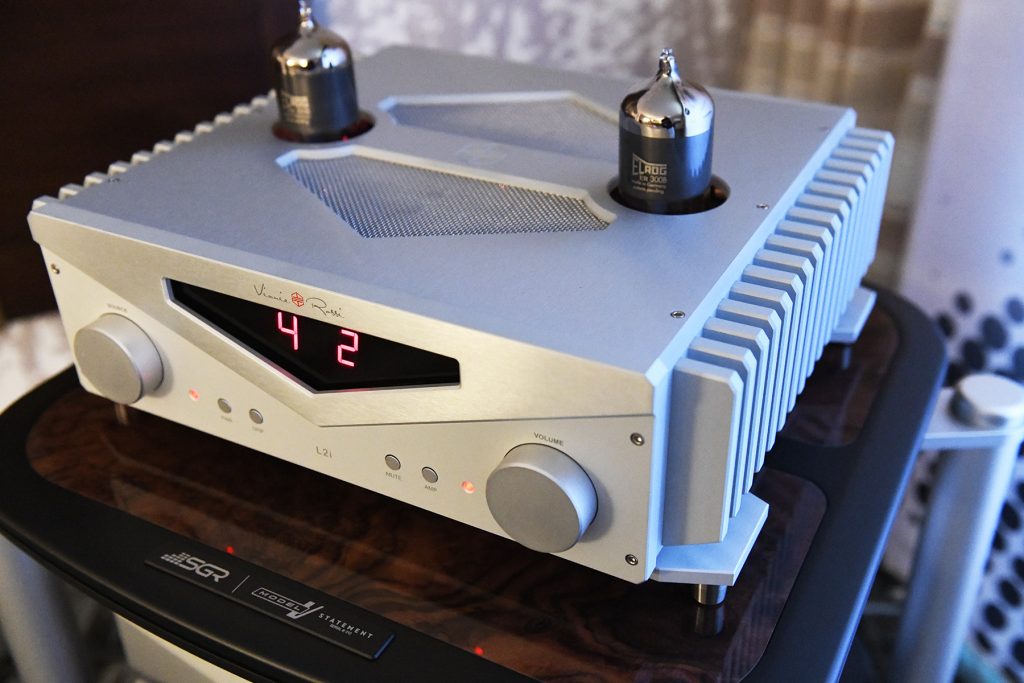
The L2i SE at RMAF 2019 (photograph and image processing by David W. Robinson)
L2i SE Integrated Amplifier
Retail price: USD $18,995 in black or silver finish. DAC upgrade option USD $3495. Phono amp upgrade option USD $3495.
Vinnie Rossi
800 Main Street, Suite 125
Holden, MA 01520
US Sales Manager
Mark Sossa
703.750.5461
All photographs as credited; other product images courtesy of Vinnie Rossi, Furutech, ModWright, and QNAP. Drawings by Bruce Walker and Dan Zimmerman.




